The Haunting Abandoned Island In The Middle Of NYC
You'd never believe that there was an abandoned island in the heart of New York City, would you? Well, there is. It's not a place you'd usually stumble upon in your day-to-day life, but occasionally people do find themselves here, such as brave kayakers and urban explorers. Here's the story behind this haunting place.
Abandoned North Brother Island, New York City
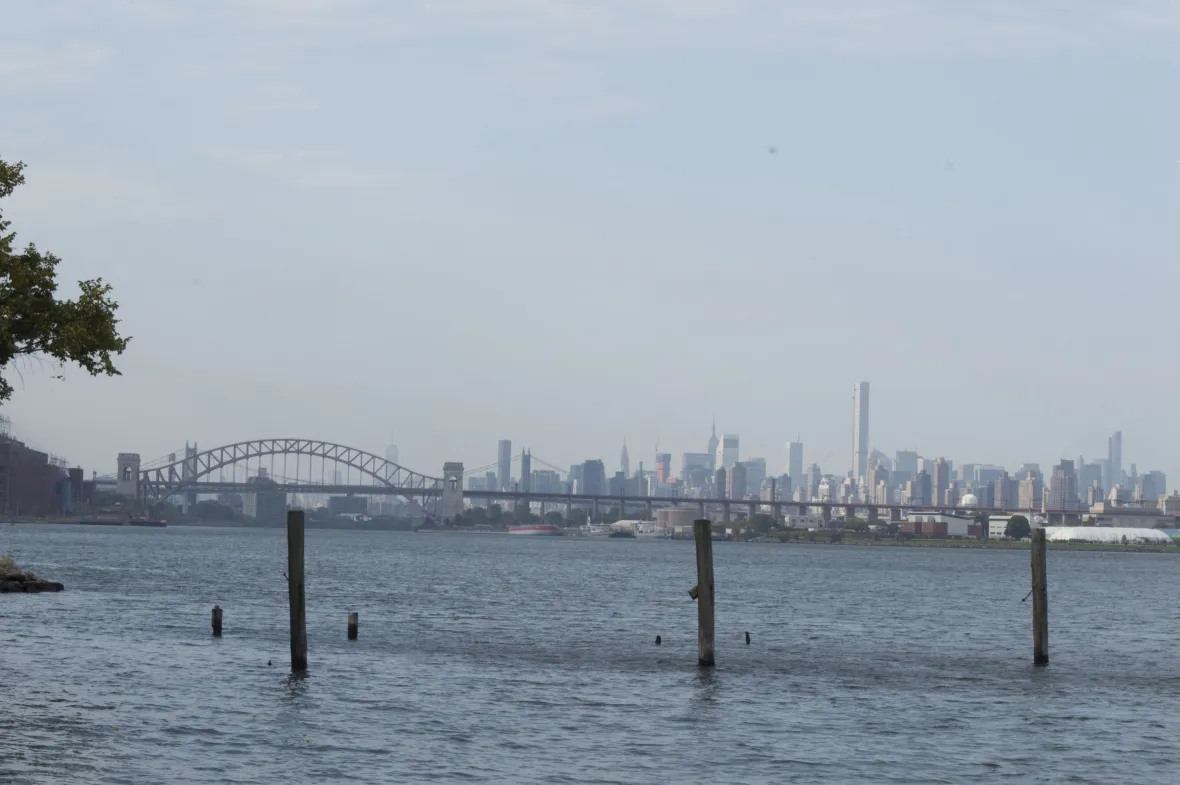
Well, there is. In a city where real estate prices and the underlying cost of land are astronomically high, there's one place where the developers still can't tread. It's called North Brother Island.
North Brother Island has an interesting history as a sanitarium, a rehab center for typhoid fever and smallpox victims, and a housing site for veterans. But today, it is being slowly reclaimed by the roots of the eerie island as an important bird-breeding habitat.
The River That Isn't Technically A River

The East River of New York is where you'll find our abandoned island but what you may not know is that the East River isn't a river at all. It's a tidal estuary and is purely salt rather than fresh water.
It runs from Long Island Sound at its northern tip and stops at Upper New York Bay at the southernmost point. For a long period of time it was the heart of the maritime trade in New York and it was once the busiest sea lane in the city. This is, of course, no longer the case and the East River is far less busy today.
The Haunted Feel Of The Island
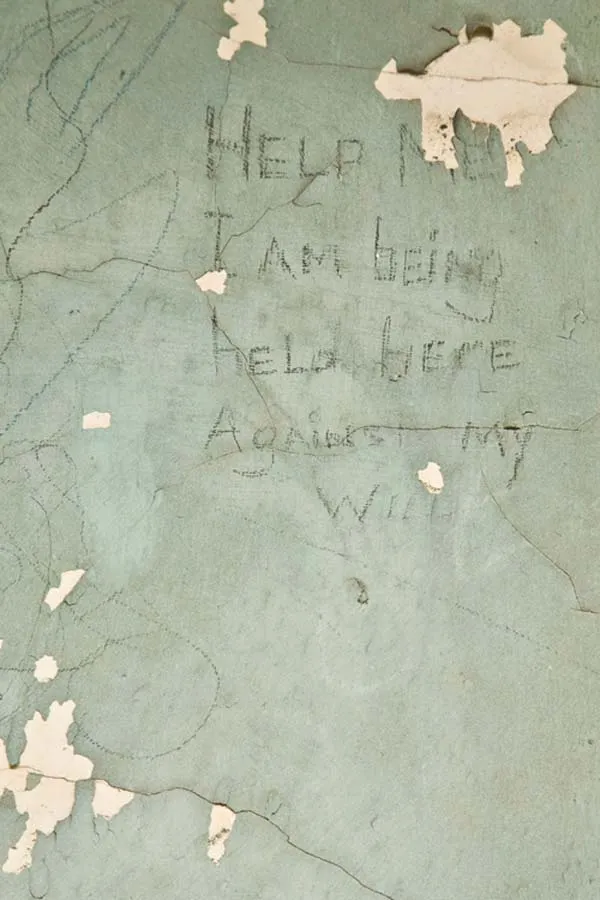
North Brother Island was abandoned in 1963 after being used as a sanitarium and rehab center for victims of typhoid and smallpox nearly 80 years up to that point.
It had been such a busy place that at one point in the island's history that there were more than 40 buildings covering the island -- including a hospital, a church, a morgue, dormitory style accommodation, a lighthouse and more. Now, as you will see, the island wreaks of a forgotten, haunting and eerie presence filled with rust, dust and fossilized furniture that was used so long ago. Broken and eroding chairs, dusty old books with ripped up pages coated with aged ink, stained and busted bath tubs filled with debris and broken windows, are just some of the things you will find on the island.
The Tuberculosis Pavilion
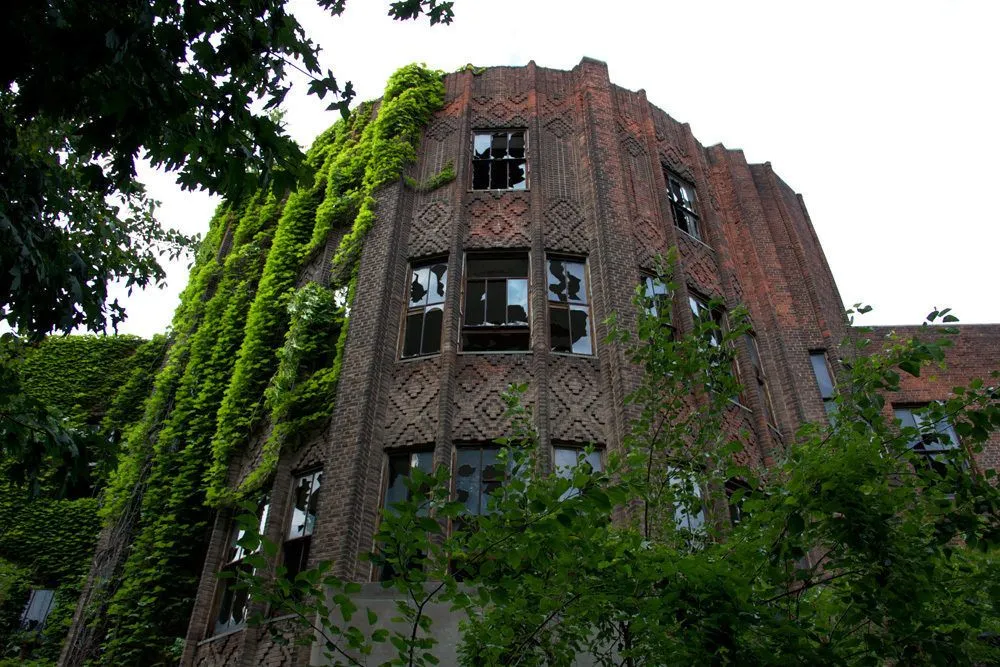
Here we see the Tuberculosis Pavilion Wing that was added on in 1941 in its current state. It's hard to imagine that this building with busted windows and growing vines once saved thousands of lives that were suffering from the awful disease of tuberculosis, isn't it?
With one of the most difficult recovery processes in medicine, victims of the disease were quarantined off in these quarters as they remained infectious until complete recovery. Although at the time the wing was very much necessary, the superstructure was soon rendered useless due to the introduction of vaccination programs and effective antibiotic treatments; it was closed just two years after its arrival.
An Inside Look
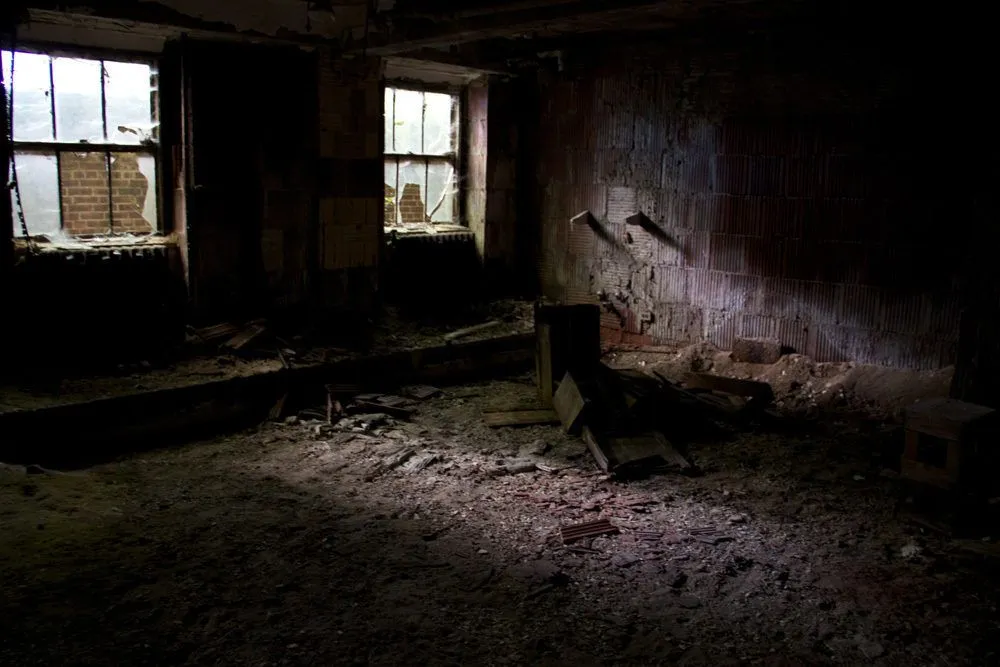
With a quick sneak peek at the horrible destruction that overcame the once clean and neat walls of the pavilion, it resembles the aged rubble of a war zone after an explosion. Considering the wing was not used after 1945, the collected dust, rust and antique furniture is quite astounding.
Although both residents and tourists have known about the abandoned location for years, the lack of graffiti to the foundation across the island is quite remarkable. Even with broken windows due to the forceful "nature" of the constantly growing vines (or random visitors,) people have relatively kept their appropriate distance when visiting.
An Earthy Floor
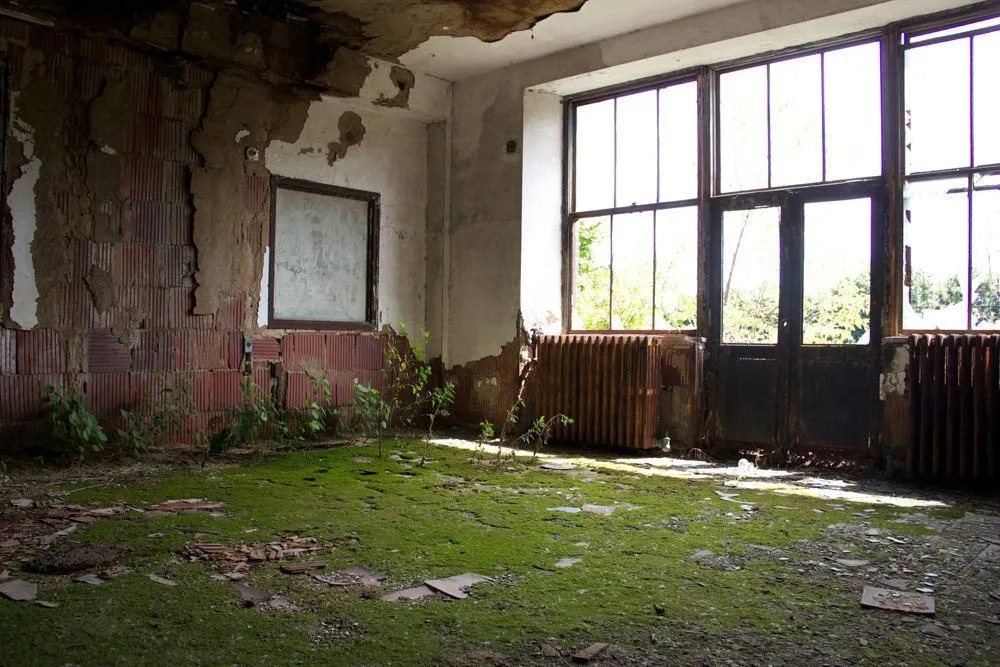
Another room inside the pavilion wing displays a somewhat "Earthy" texture covering the grounds, matching the rest of the island. With roots busting from the cracks of the floor, it's strange to think that none of this decor existed over 40 years ago.
Take a close look at the intense damage on both the surface and interior of the walls and ceiling. Less than 50 years before, this wing was dedicated to improving and saving the infected lives of those suffering from the disease. And, now we see almost a garden-like setting surrounded by the ruins of a foundation that has still managed to stay somewhat intact.
The X-Ray Room
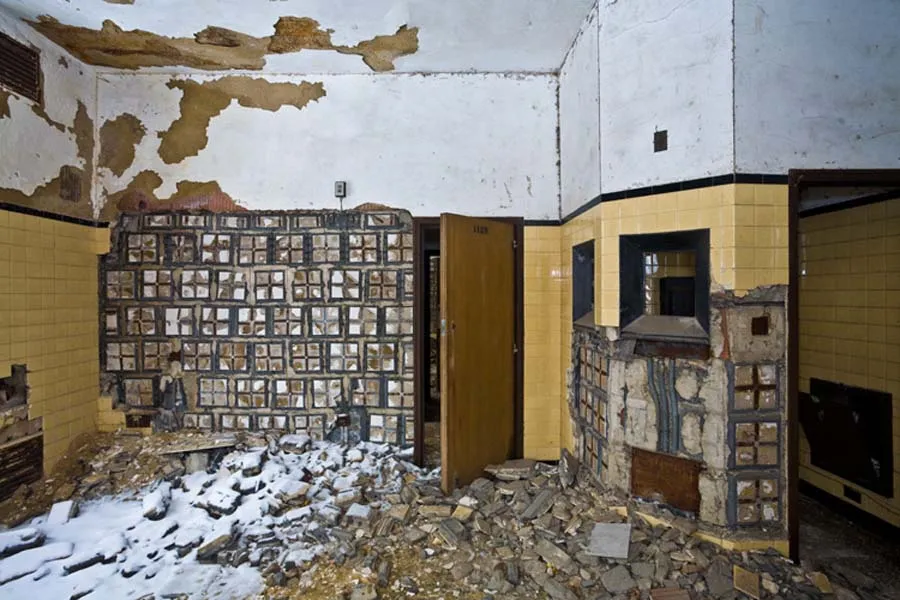
Formerly the x-ray portion of the pavilion, this has now become a tile sanctuary on the first floor of the medical wing. The control room on the adjacent left side does not reveal as much damage as you would expect, but the wall has significantly taken a beating.
Once yellow tinted from the ceramic tiles overlapping one another, has revealed square lead blocks that line the now-exposed surface of the demolished walls. Again water damage is found when looking at the upper walls and ceilings toward the right of the room, although we are surprised that this room stayed in tact at all over the years.
An Abandoned Auditorium
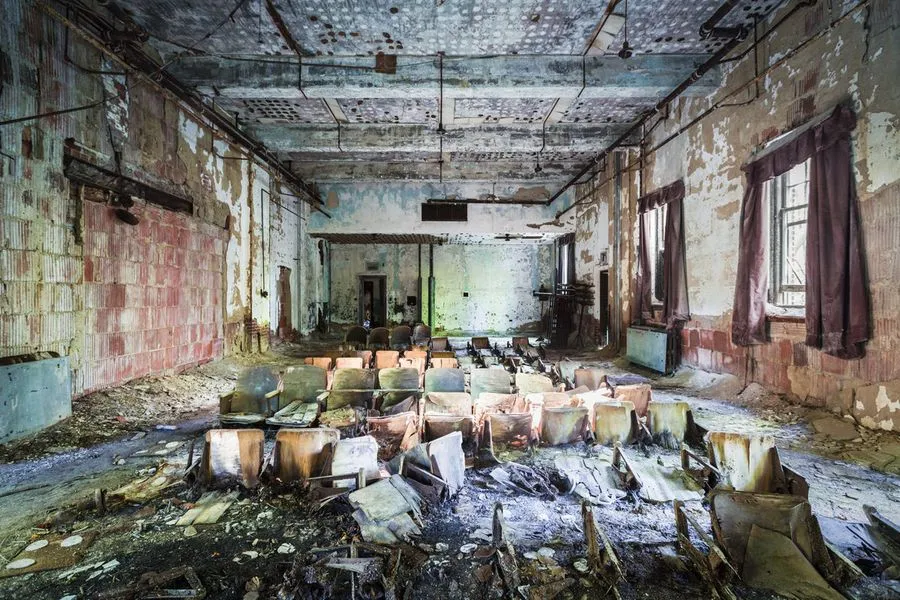
One of the most momentous rooms left on the island, still left to its crumbling roots, is the auditorium located in the North Brother "School" that was originally the island's Services Building. As an environment that once functioned in the benefit of the children and teachers, parcels of collapsed and destroyed furniture remain along the grounds of the room.
If these corroded walls could speak, we wonder what they would reveal about this former "services" chamber. Most likely used to collect the hundreds of sick children that inhabited the island, the institution was once vital to the system implemented on the abandoned piece of land.
One For The Books

Covering a majority of floors, abused and abandoned books lay with lost and meaningless words that once meant everything to the residents and employees of the island. Here we see what is left of the children's ward, which was later turned into a library and annex after the tuberculosis pavilion was turned into a drug treatment center.
As previously mentioned, when the victims of tuberculosis were being seen for treatment, their highly contagious natures kept them under constant supervision until the disease was entirely treated. With what could range from months to years, the children must have felt quite restless and likely used books as their main source of entertainment. With this logic, it makes total sense to have turned this section of the island into a library.
Holy, Mossy Remains
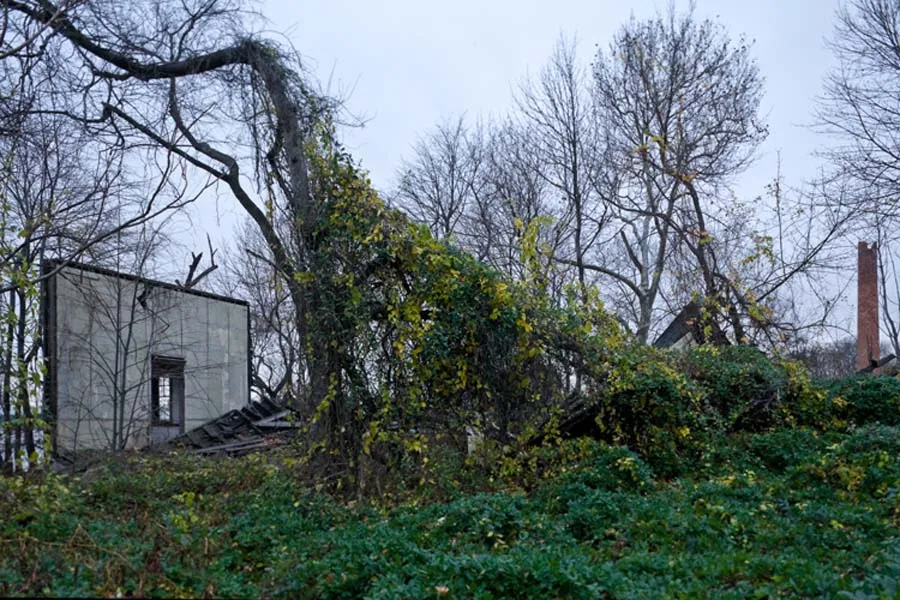
It is hard to make out that this used to be the island's second chapel; now one standing wall, bits of the floor and a moss covered tree, the chapel has almost completely disappeared. Made of wood, the structure has practically vanished into the aggressively growing forest that is slowly swallowing the island whole.
A community built under such stress and heartbreaking and life-threatening conditions surely needed a source of faith and prayer; which is why they had two. Although the establishment looks as if it was never valued, we understand that the city was nothing without it. Now that we have seen what North Brother has become today, let's take a look back on its interesting history.
Origin Of North Brother
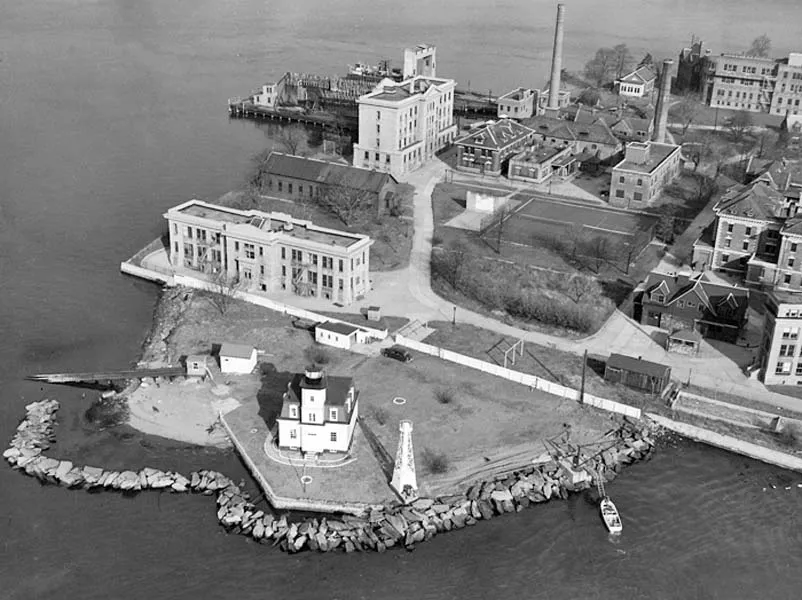
While North Brother Island was in use, the victims of smallpox would only remain on the island while they were in their contagious period or they would be buried there. Once they had recovered they were permitted to leave the island and return home.
A program of vaccination based on the work of Edward Jenner, who had discovered that infection with a weak version of the disease, cowpox, provided an effective barrier that prevented people from catching full-blown smallpox, had been run out worldwide and effectively eliminated the disease globally. Smallpox victims could be removed from the city and placed in the sanitarium on the island where they would be cared for by medical staff who had already suffered from and recovered from the disease.
Typhoid And The Island
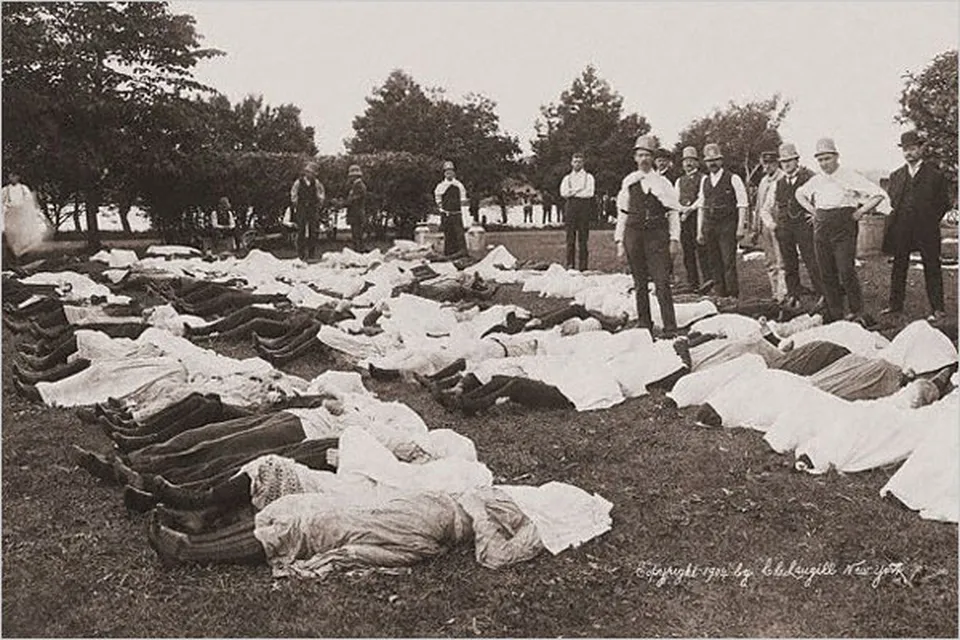
Typhoid, unlike smallpox, is a peculiar disease that breeds a much smaller amount of casualties; although it kills 10% of victims or more if left untreated. It is caused by a particular strain of the salmonella bacteria called salmonella typhi.
Most people when infected with salmonella typhi become sick shortly afterwards. They develop a fever (typhoid fever from which the disease takes its name) and then a rash followed by a wide-range of fairly unpleasant complications. Assuming that the person makes it through three weeks of infection, then it is likely that the disease will be beaten off by the body's immune system and the victim will return to health. However, there are some rare people that don't get sick from salmonella typhi.
The Island's Most Infamous Resident, Typhoid Mary
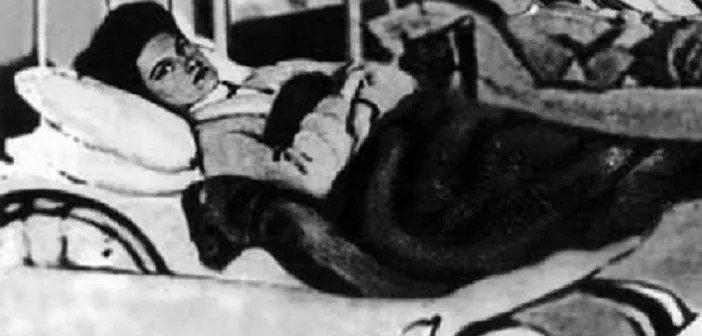
Mary Mallon didn't get sick from salmonella typhi. Instead, she found herself as an asymptomatic carrier of the disease. What that means is that Mary would never get sick from typhoid but was able to infect other people by passing on her infection.
She became known as "Typhoid Mary" for the large numbers of people that she infected in New York while working as a cook. She refused to believe that she was responsible for the outbreaks and she was eventually forcibly quarantined on North Brother Island for more than 20 years after refusing to stop working as a cook.
Typhoid Mary Dies On The Island
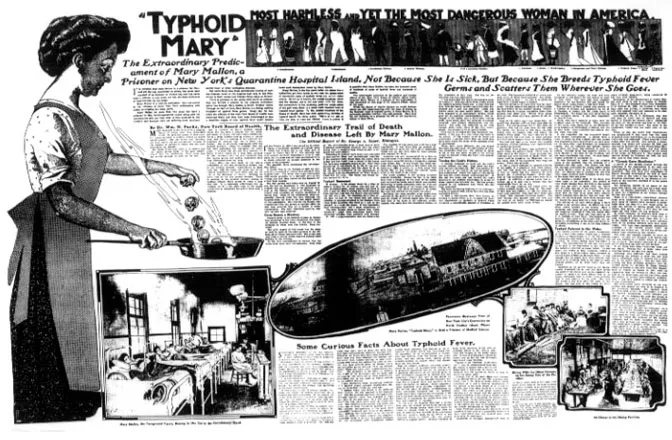
Mary Mallon's legacy is a harsh one. The infections that she caused because of her refusal to believe that she was a typhoid carrier, killed at least three people. However, it's estimated that she may have been the cause of over 50 deaths as tracking her total impact on public health was mired with problems.
In 1932, Mary was working as a technician on the island when she had a stroke which left her completely paralyzed. She died in 1938 of pneumonia. After her death, an autopsy discovered typhoid bacteria still happily living in her gallbladder. This was 100% proof of her carrier status.
Tuberculosis- Another Serious Problem
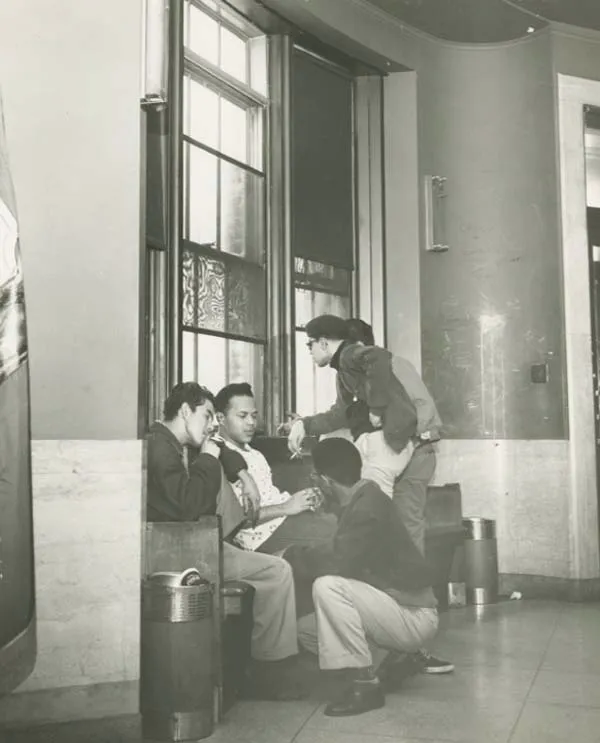
Tuberculosis, another serious disease treated on the island, is a bacterial infection which causes the destruction of lung tissue; it is spread from person to person by airborne means.
The disease can be vaccinated against and the vaccine is highly effective. However, again due to the costs of vaccination programs - many people are not immunized against tuberculosis even today. People who smoke or who have HIV are particularly at risk of become infected with tuberculosis. The disease can be treated through the use of antibiotics but there are growing numbers of antibiotic-resistant tuberculosis and in 2014 nearly 10 million people contracted tuberculosis and nearly 1.5 million people died of it.
Not Just A Sanitarium
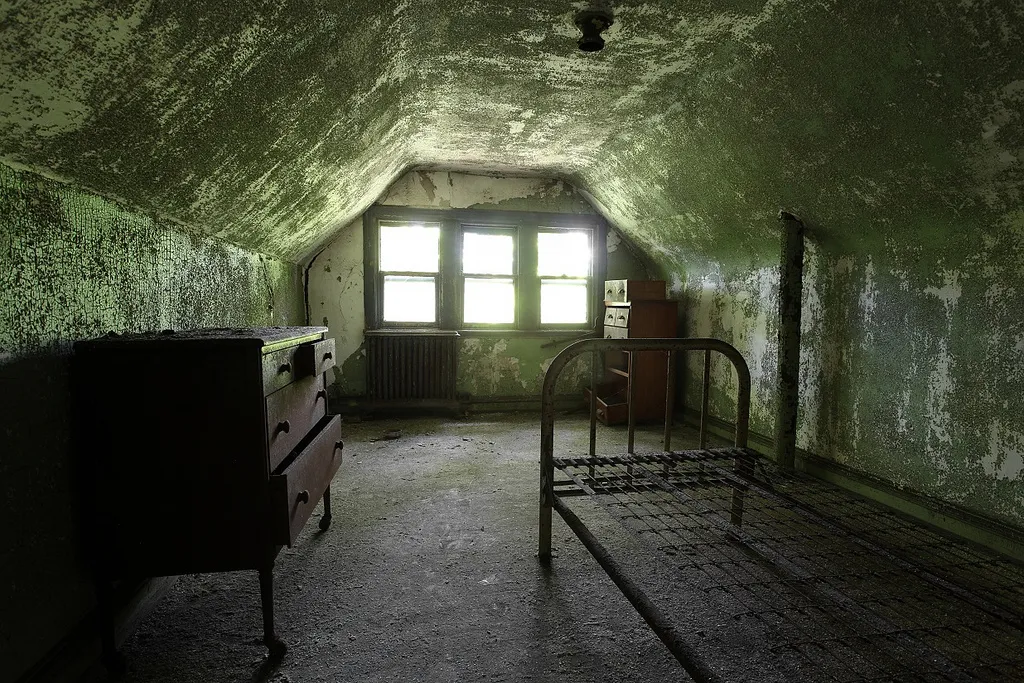
In the last years of its existence however, North Brother Island became more than a treatment facility; it became a home to service people and their families like this attic room that still remains in tact.
World War II had taken its toll on many people and war veterans often found themselves struggling. As the diseases that North Brother Island was built to defend against went into decline in America, the island was used to assist those in need of housing. It would have been an attractive place dotted with roads, lawns and buildings and families would have thronged the streets, enjoying the facilities of their new New York home.
The End Of An Era
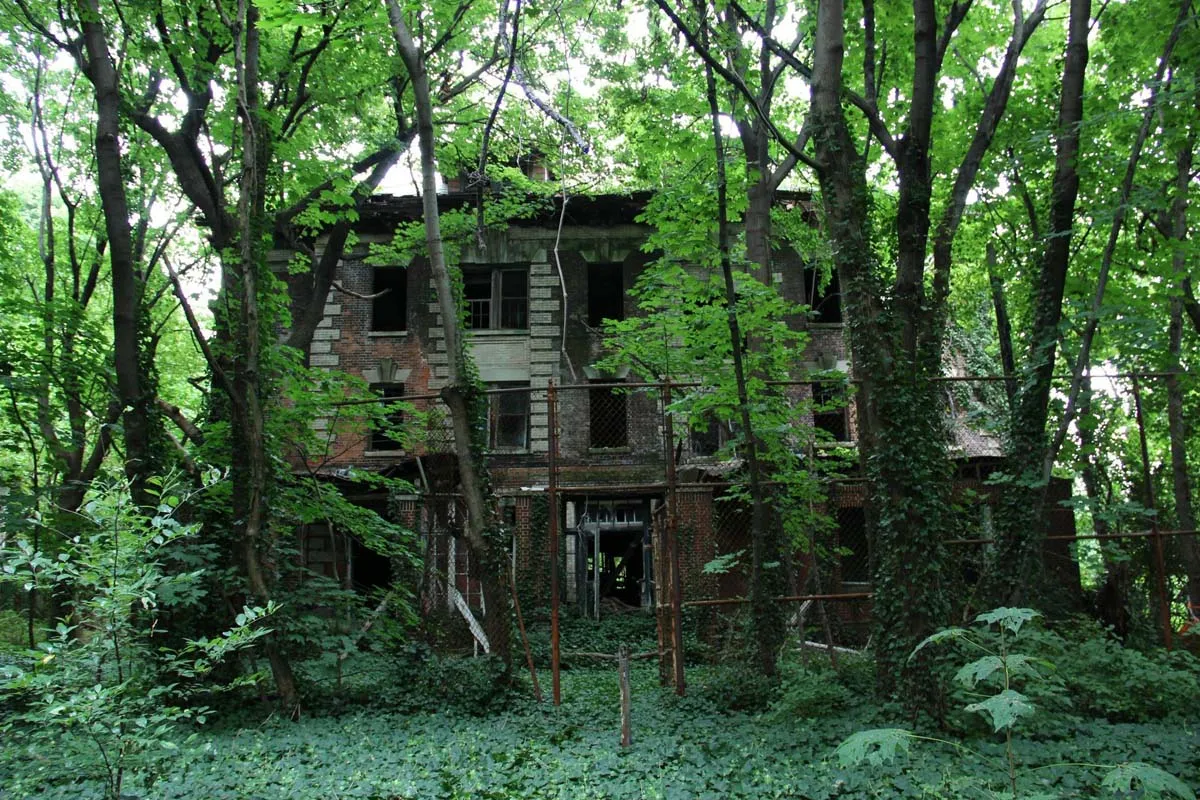
North Brother Island began to fall into disuse in the 1950's. The residents felt that it was impractical to live on the island and work in New York, which required an irregular ferry service to shuttle them back and forth.
The city, on the other hand, was more concerned about the costs of maintaining North Brother Island. There was plenty of cheap real estate on the mainland back then and the city was subsidizing the ferry service. It was decided to relocate the remaining families and heroin rehab patients back to New York proper and to abandon the island to nature.
The Island Today
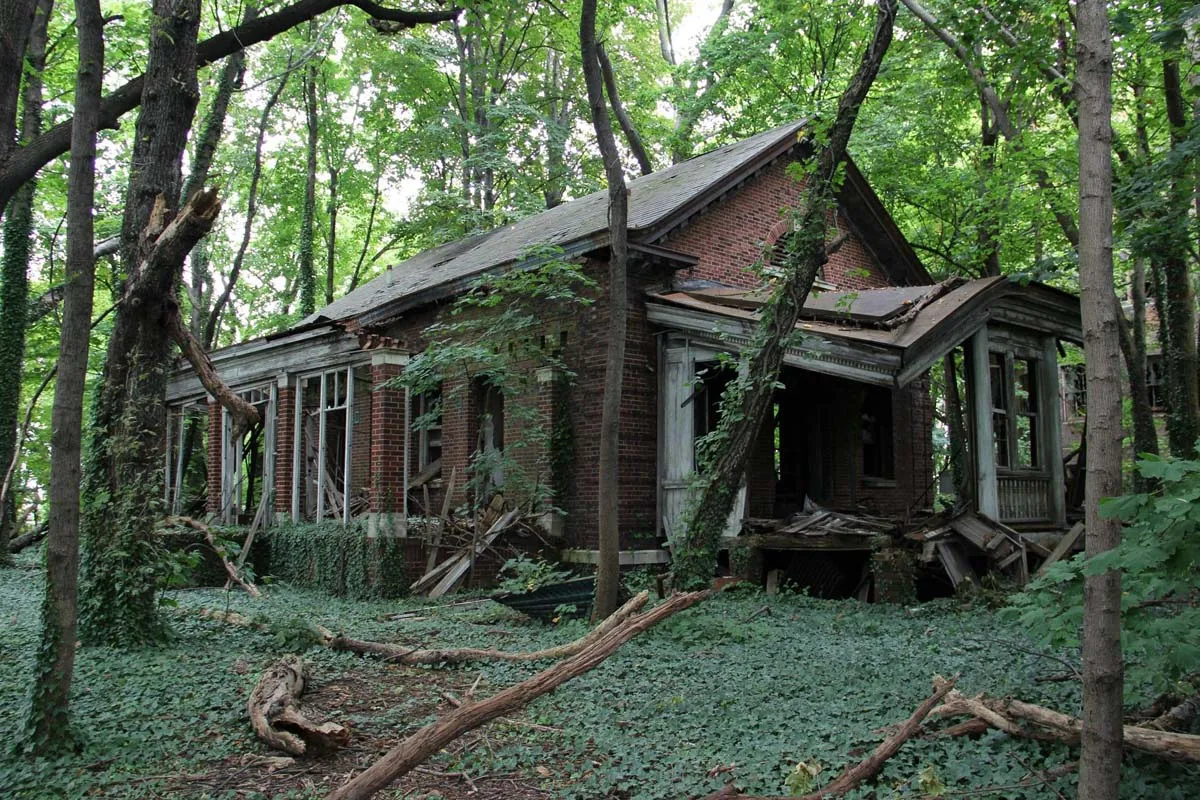
Fast forward 40 years to vines spread across the island engulfing the buildings slowly but surely; this island was forgotten for quite awhile. In the 70's, it became a popular boating spot where light vandalization did occur to the 26 individual foundations that are found on the island.
However, within the last 11 years or so, the island along with 17 of the other islands surrounding the state of New York, has been used by the New York City Audubon as a Weather Bird Breeding environment.
The Bird Sanctuary
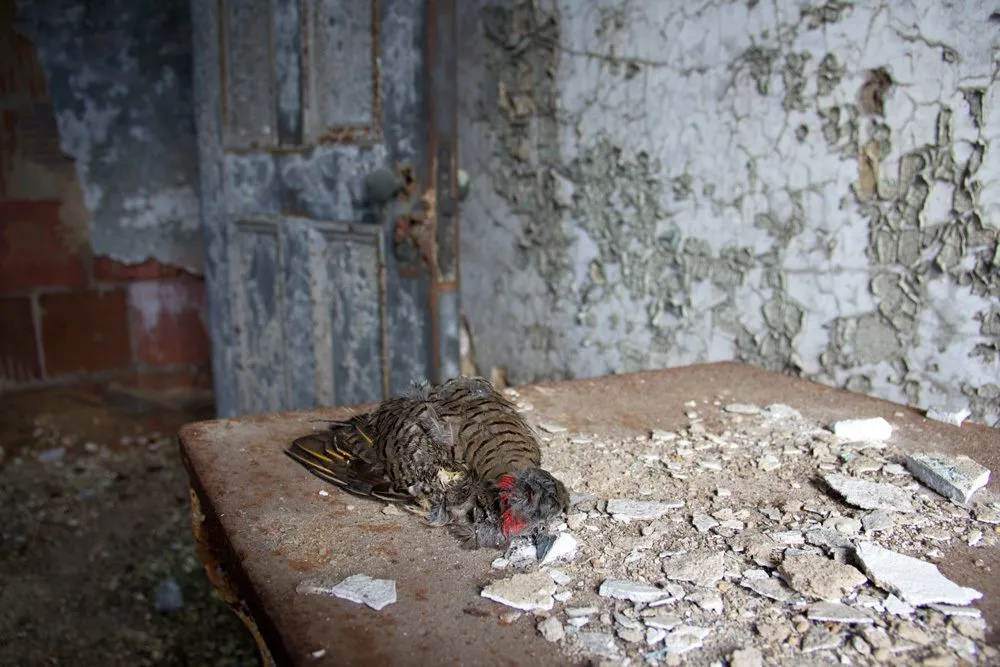
Now a Colonial Weather bird nesting habitat for Black-Crown Night Herons and other species of its nature, North Brother is a site for breeding bird activity along with its South Brother mate island that are both very sensitive to the public.
Seeing that the buildings have been significantly soiled by nature itself, the physical atmosphere of the island is just too perfect to not be utilized as a bird sanatorium. Although, sadly as it once was home for these types of birds, in more recent years a significant decline in breeding has been found.
The General Slocum Disaster
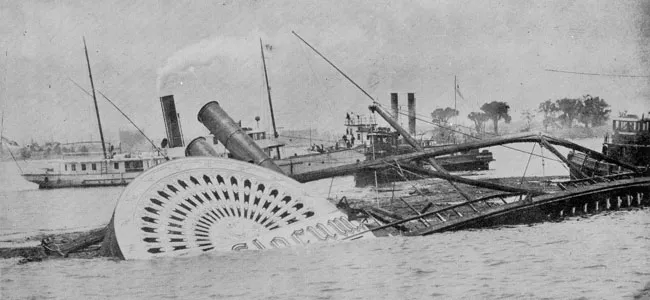
North Brother Island's tragedy wasn't limited to the deaths caused by illnesses like Typhoid and Smallpox. It was also the setting for a horrible, freak accident that caused the death of over 1,000 people.
On June 15, 1904 the PS Slocum, a sidewheel passenger ship, was chartered by the St. Mark's Evangelical Lutheran Church for $350.00. It was supposed to be a fun-filled day outside of the city for the passengers of the ship, which included mostly women and children from the German-American community of the Lower East Side. The ship was supposed to travel from New York City to the North Shore of Long Island, but it would never make it there.
A Fire Broke Out On The General Slocum
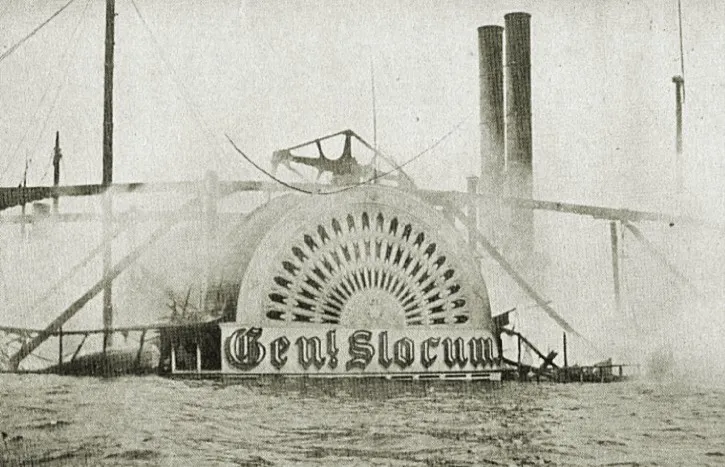
As the PS Slocum made its way up the East River, things turned badly almost immediately. While no one is exactly sure how the fire broke out, we do know that it spread rapidly within a half hour of leaving the dock at around 9 a.m.Most of the passengers on the ship couldn't swim. A panic broke out as the passengers faced either being burned alive or drowning.
Captain William Henry Van Shaick steered the ship towards North Brother Island, but it was too late. Only 321 passengers would survive out of the 1,358 on board. The final death count totaled 1,021, and many of the bodies washed up on shore within the next week. This disaster was the next largest death toll in the United States next to 9/11.
The Aftermath Of The General Slocum Tragedy
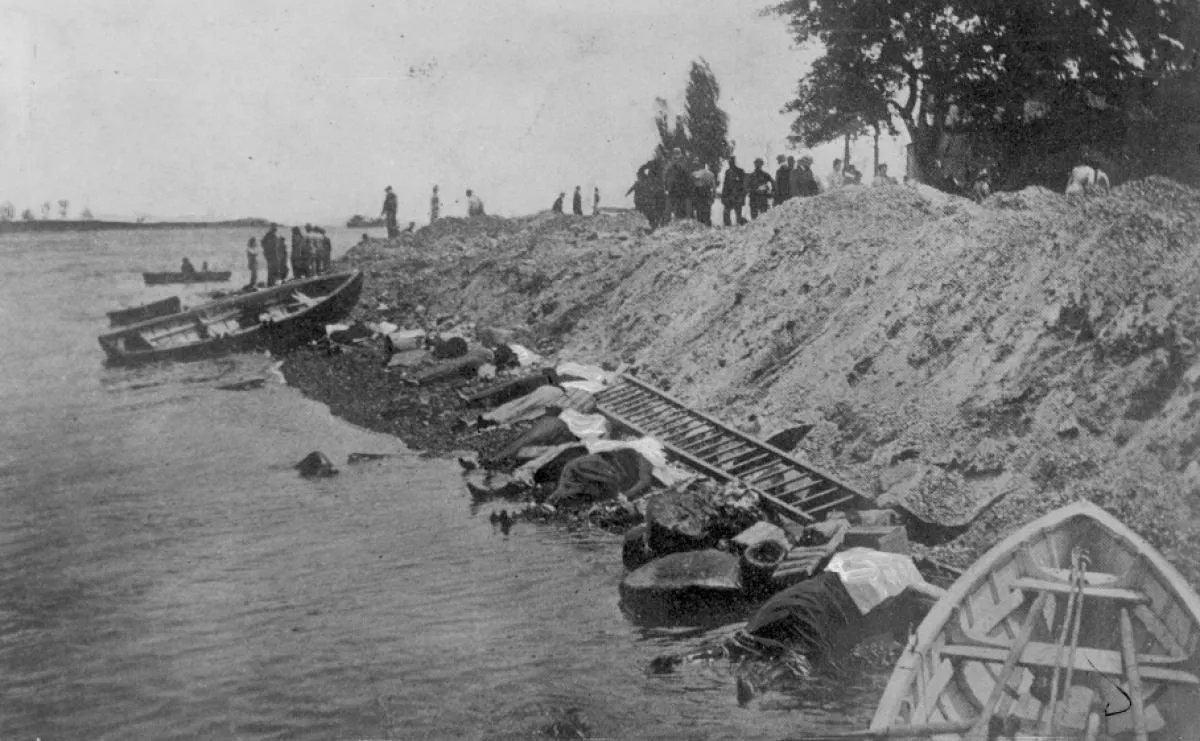
Captain William Henry Van Schaick was held responsible for the accident. It was widely reported that he didn't bring the ship to shore for insurance reasons. Onlookers could see the burning ship just off shore and wondered why he didn't come back to land. Instead of turning around and docking the ship, he sailed it to North Brother Island. According Van Schaik, gas tanks and lumber yards near 130th Street, where the boat was burning right off shore, made docking there dangerous.
Van Schaik was found guilty of criminal negligence because he failed to maintain the fire drills required by law. He was sentenced to 10 years of hard labor, and ended up serving only a portion of his sentence at Sing Sing prison. He was pardoned by President William Howard Taft in 1911.
The Nurses' Home
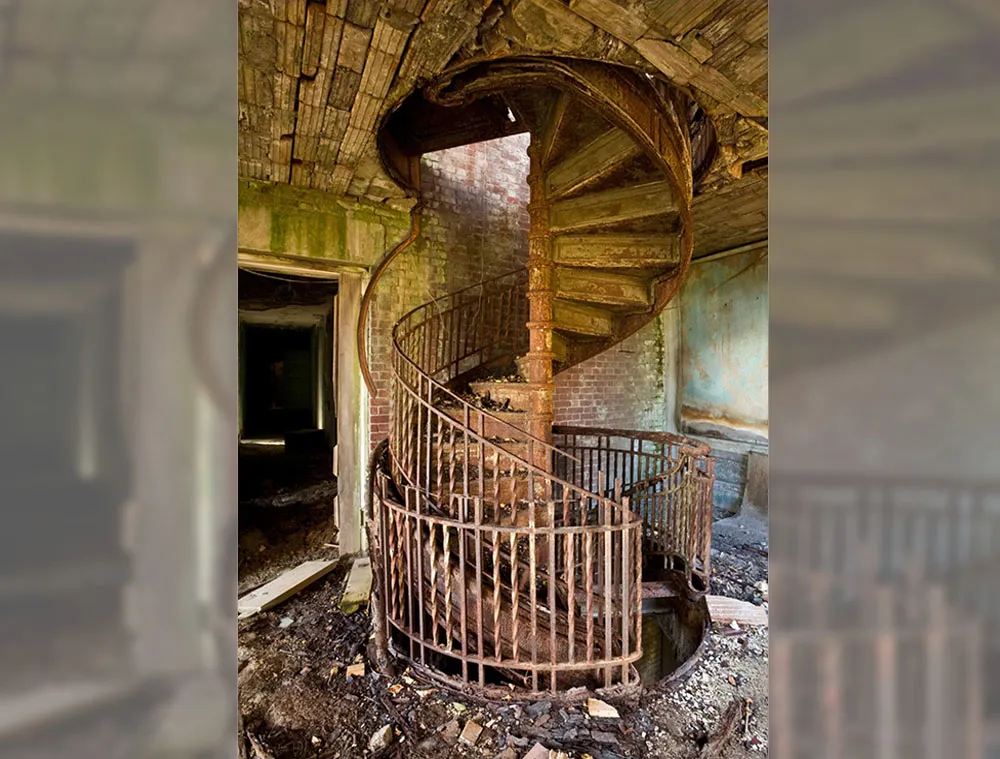
The nurses' home had stunning architectural features like the cast iron staircase that still stands today. This staircase connected three contiguous floors on the oldest portion of the Nurses' home.Today, the Nurses' home is one of the creepier buildings on the island. Radiolab, who managed to visit the island in 2011, saw something rather unsettling within the crumbling walls.
The building may have been taken over by nature, but humans were definitely there in the sort of recent past. The outer door was perforated with bullet holes, but these bullet holes weren't entrance wounds. Someone was shot at from inside the nurses' home. What exactly happened remains a mystery.
Vines Threaten the Bird and Tree Population
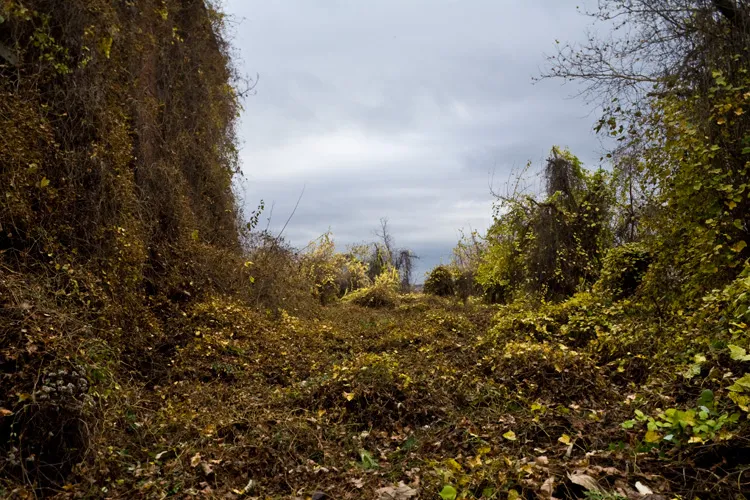
The southern side of the Nurses' home is completely covered in vines. It's almost hard to tell that the building exists at all. Unfortunately, as nature takes back the land, it also threatens the natural tree and heron population.The wall pictured above is covered with kadzu, a type of vine that's not native to the island. This is, of course, impacting the structural stability of the building – but what does it matter if it's completely uninhabited.
The problem here is that kadzu is suffocating the native trees that grow on the island. It's also threatening the homes and breeding patterns of the herons that live there.
Odds and Ends in the Maintenance Building
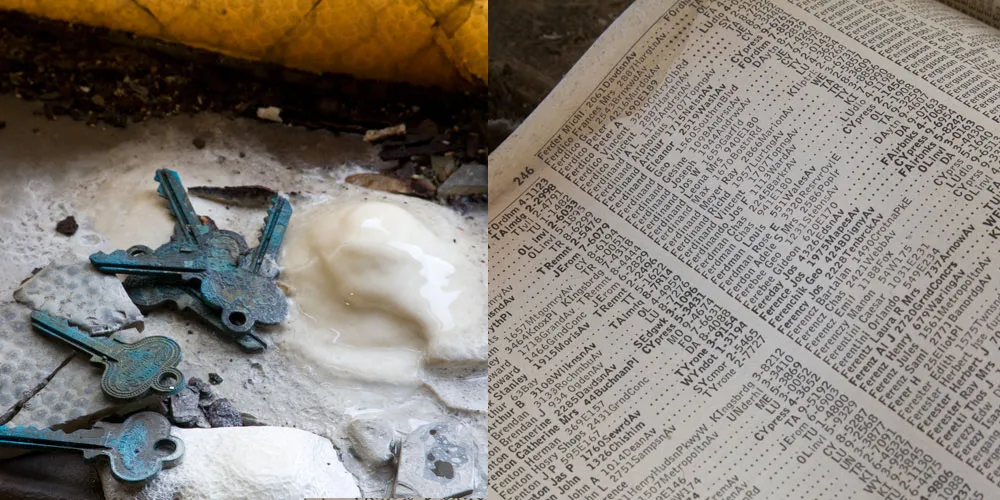
Perhaps some of the most interesting parts of exploring a forgotten world are the smallest details. In the above image, you can see keys that were used to access various buildings on the island. These keys were found in the maintenance building that still has various bits and bobs.
As you can see, chemicals have altered the appearance of the building. The keys are resting next to a chemical stalagmite. Within the maintenance room, you can also find a very old phonebook that’s almost entirely intact. The phone numbers in the book certainly don't look like the phone numbers we use today.
Tuberculosis Pavilion Never Used For Patients
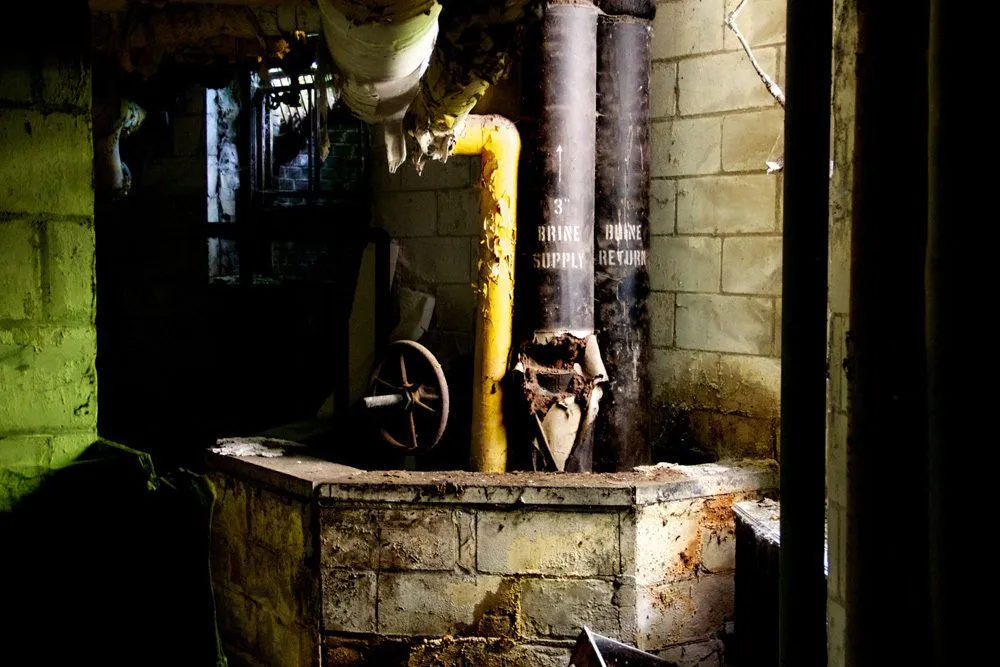
While the tale of Typhoid Mary may have put North Brother Island on the map, it would be remiss to mention that not all the buildings were used for their intended purposes. The Tuberculosis Pavilion was built in 1941, but it never treated a single patient suffering from the disease.
The island was abandoned before it could be used and those suffering from tuberculosis were moved to different municipal facilities. The tuberculosis hospital was used initially as a dormitory and then became the main residence and treatment building for Riverside Hospital's rehab program.
Addiction On North Brother Island
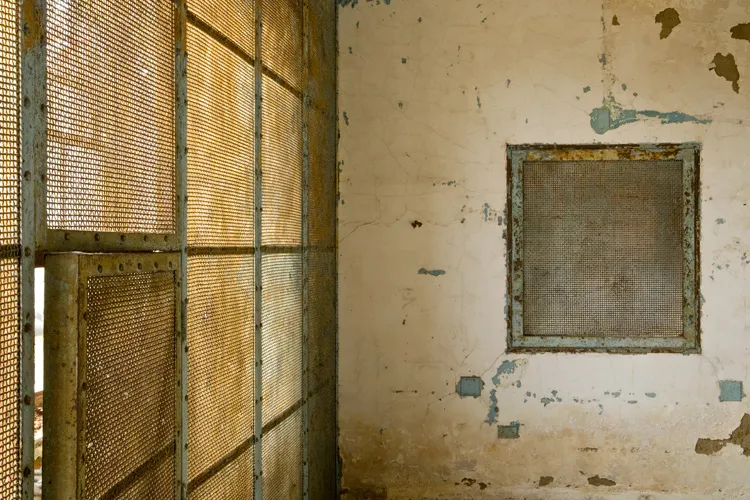
The tuberculosis building was never used to treat tuberculosis patients and was instead used for Riverside Hospital's juvenile substance abuse treatment program. It turns out, the building wasn't much suited for rehab. Many of the doors in the building were turned into seclusion rooms with heavy deadbolts and sheet metal reinforcement. This is how they'd treat people going through withdrawal.
Addicted patients were locked in a seclusion room given only a bare mattress and a mess bucket. They were forced to go through withdrawal alone, and given no medicine unless the situation was life-threatening. After several days, the withdrawal would be complete, in which case they were thrown back into the general population completely unequipped to handle sobriety.
Adapting The Island For Addiction Treatment
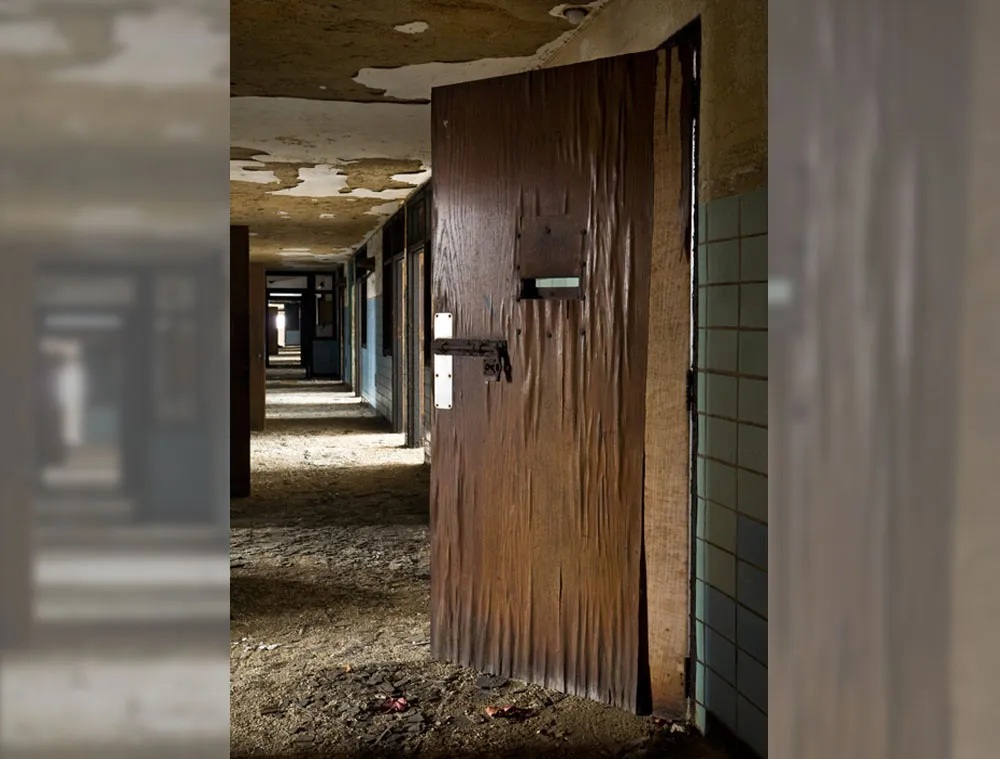
Obviously, throwing a recently clean addict back into the general population doesn't really do much to help their plight to stay sober. Eventually, Riverside Hospital realized this and decided the best option for treatment was to keep patients on the island for no less than 90 days.
They ended transforming the buildings to suit these juvenile addicts. The services building was turned into a school, the nurses' house became girls' dorms and the original children's ward, which was located next to the tuberculosis pavilion, was turned into a library and annex to the school.
Substances Were Still a Major Problem on the Island
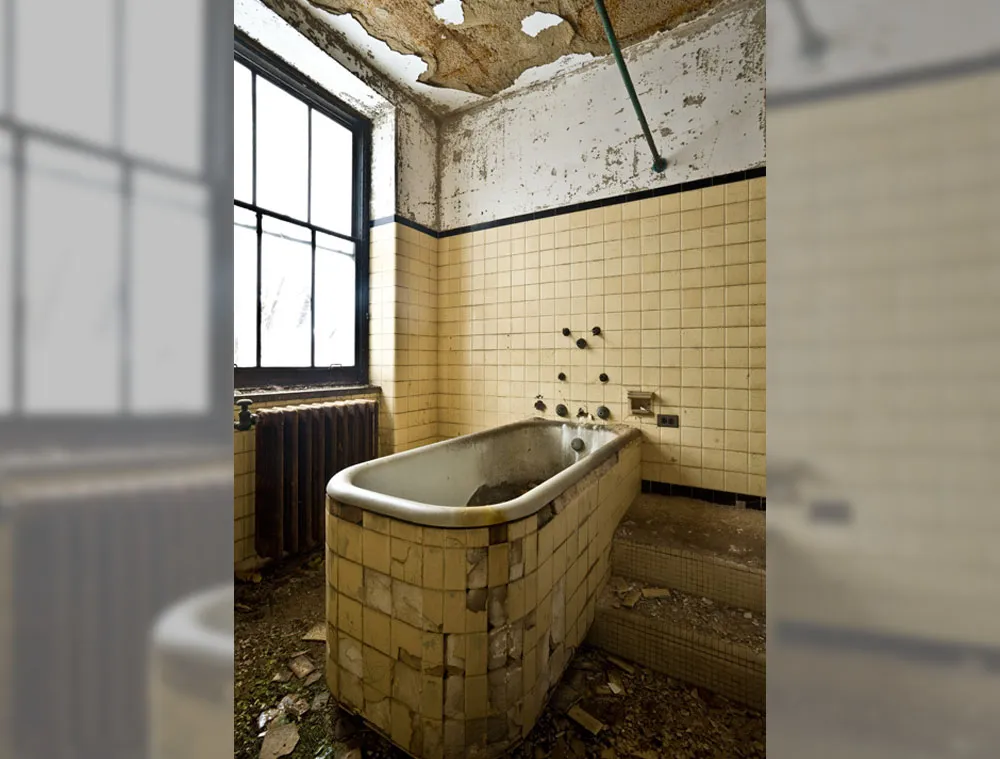
With the new buildings in place, the founders of the rehab program were very optimistic about the effectiveness of treatment. Unfortunately, relapse rates were extremely high and patients were using narcotics on the island and inside of the very hospital where they were being treated.
There are numerous reports of people traveling to the island in the middle of the night to smuggle in goods for their friends and significant others in rehab. There were also accounts of orderlies sneaking substances in on the ferries in exchange for cigarettes. There were also various accounts of abuse on and by the patients. For this reason, Riverside was shuttered completely.
The Morgue
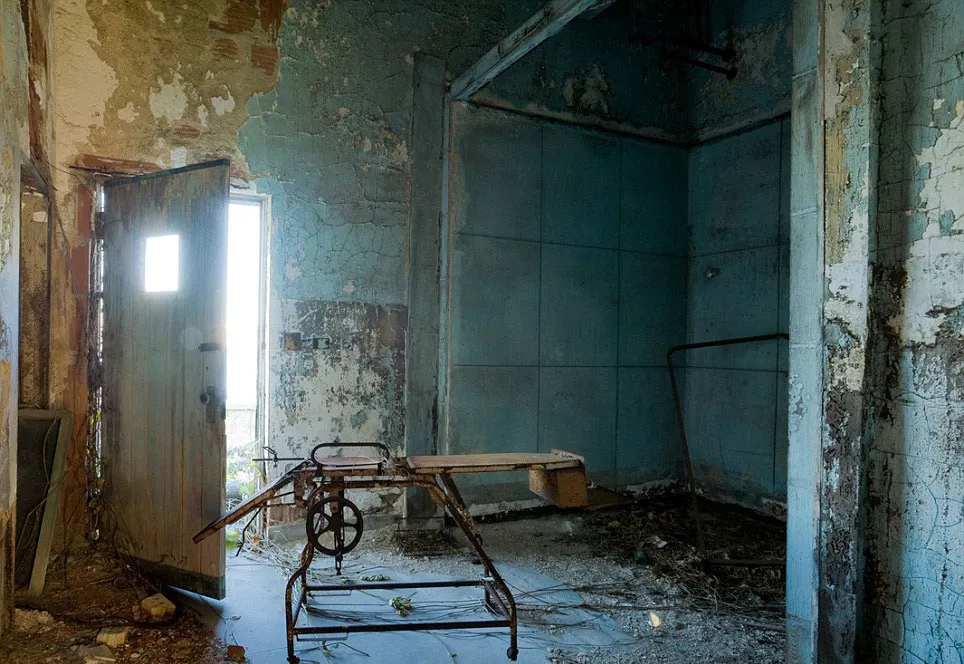
The above room served as the refrigeration room in the morgue for Riverside Hospital. This was in the same building where Typhoid Mary studied to become a pathological assistant. Upon her death, she was brought to this very morgue where it was confirmed that she did, in fact, have live typhoid cultures in the gall bladder.
The morgue was located next to the physical plant, and the exterior remains in almost pristine condition. The reason there is an entire refrigeration room is because the morgue did not use individual cabinets for each corpse. The table pictured is an exam table, but not an autopsy table.
A Single Hoop
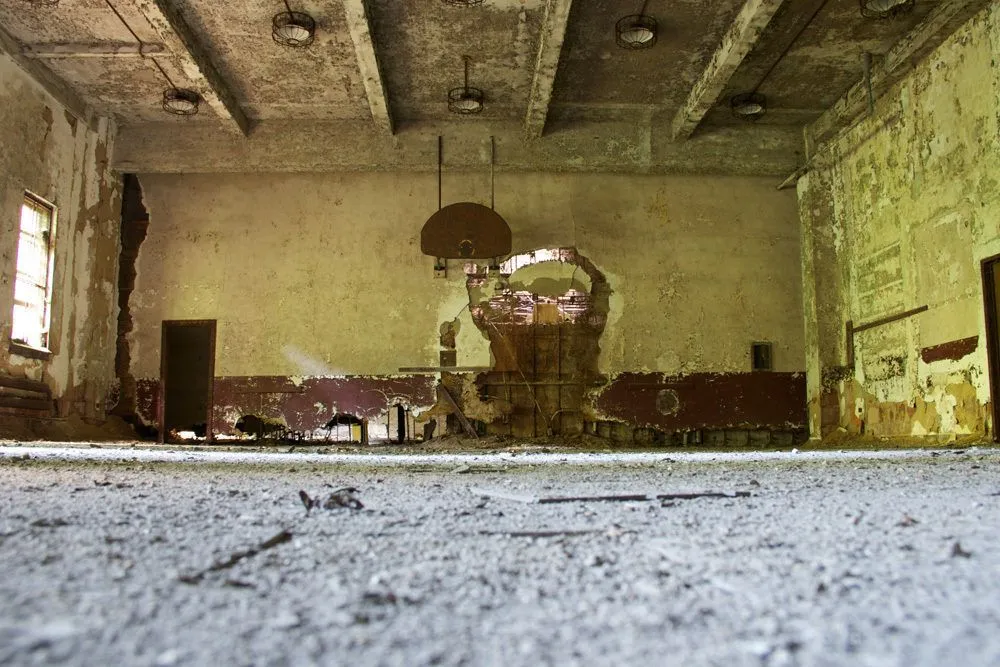
In this room we see the remains of a former recreation center. The deteriorating basketball hoop still hangs from the ceiling, where this appears to have been a full court, with another hoop on the opposite side.
It was the collective hope of the staff that creating an athletic atmosphere would aide the addiction-riddled population of the community. Just beyond the giant gaping hole in the gym's wall was the lavatory that you can even tell from here has suffered from massive water damage over the years.
Patients Were Held Against Their Will
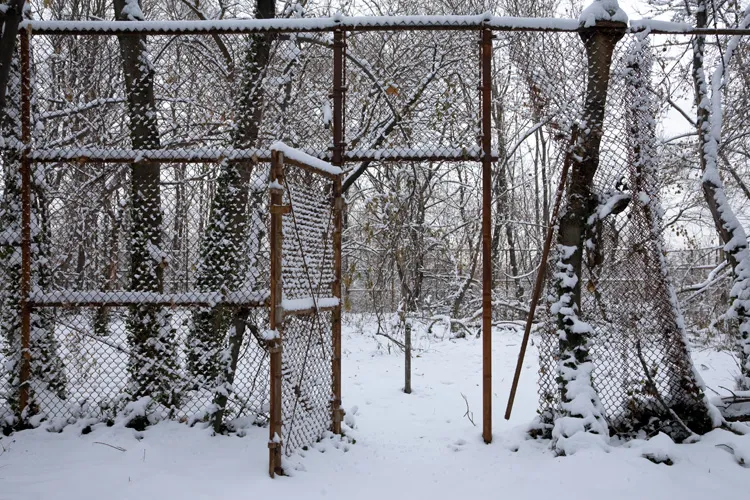
A disturbing note was found etched into one of the walls of a seclusion room in the tuberculosis pavilion. It read: "Help I am being held here against my will." The note was most likely the writing of a drug-addicted rehab patient who was confined to a seclusion room to wait out his withdrawals before Riverside's drug program became defunct. His disdain for the facility was not uncommon.
One thing almost all patients had in common – from those infected with typhoid, smallpox, and TB to those who were in drug treatment – was that they didn't want to be there. These people were being treated for socially stigmatized diseases and essentially imprisoned on an island.
The Boys' Dormitory
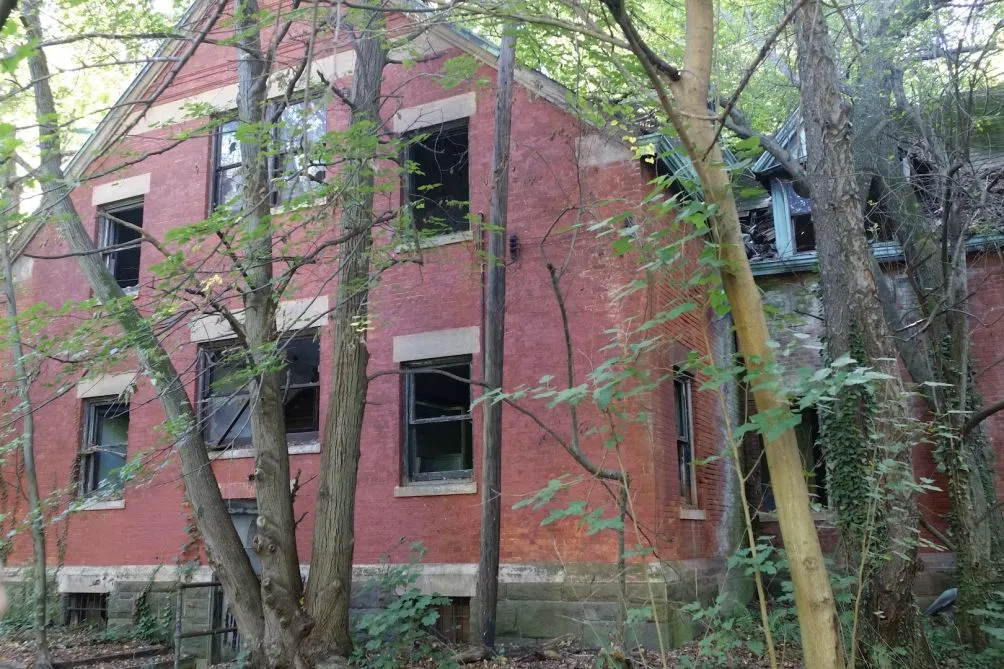
The boys' dormitory is one of North Brother Island's oldest buildings. It was built by famed architect Charles Coolidge Haight in 1855 and has managed to stay in relatively great condition. The windows have been blown out by nature, but the brick walls are still standing strong.
Currently, the boys' dormitory is one of a handful of buildings being considered for restoration in the future. In the future, city officials hope that the island can become a place of learning where students and groups of people can visit to learn about New York City's history and ecology.
The Lack of Docks
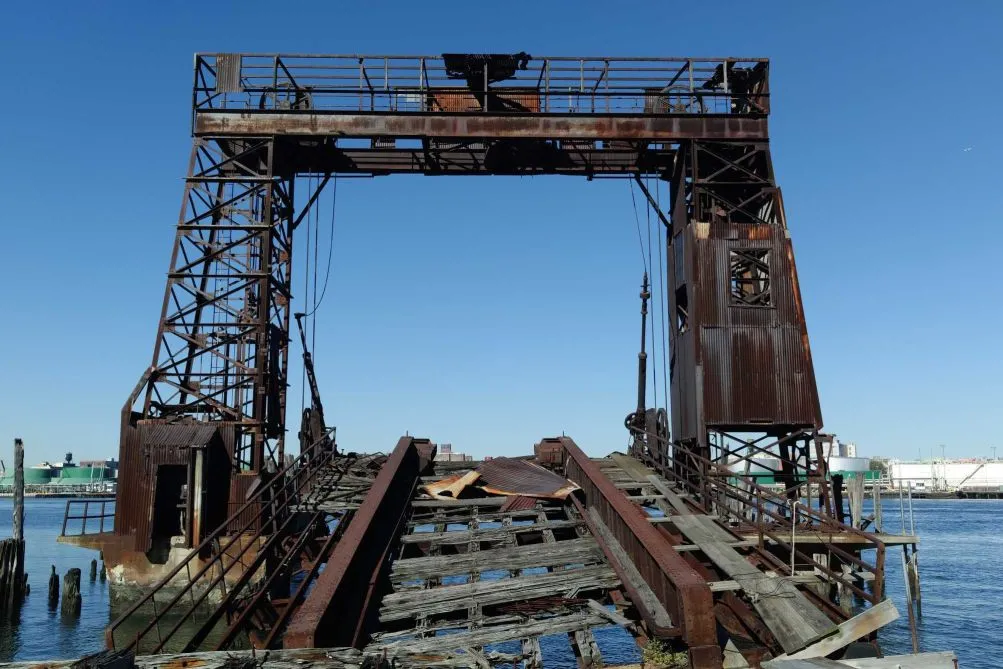
Currently, North Brother Island has no docks making it inaccessible to the public. It wasn't always that way. This old gantry would have lifted cargo off boats to get much-needed supplies to the island. It's important to remember that the island was at one point a fully functioning city with cars, roads and tennis courts.
City officials are contemplating installing a proper boat landing in the restoration process, in hopes that much of the island will be restored and become a source of tourism within the city. Currently, boats are tied to old pilings near the defunct crane that used to transfer goods from boats to the island.
Damage to Smokestacks
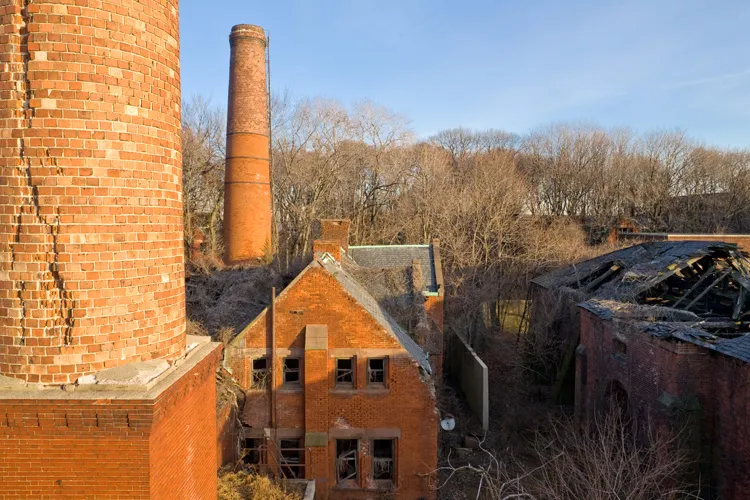
While many of the buildings made of bricks stand strong among rotted wood and blown-out windows, the smokestacks are a different story. In the late 1990s, lightning struck the larger smokestack on the island, causing it to shed several feet of bricks. These bricks ended up destroying a portion of the roof of the morgue.The smokestacks from the boiler room remain a hazard to potential visitors.
They continuously shed bricks and remain completely unstable. According to John Krawchuk, the executive director of the city Parks Department's Historic House Trust, many of the buildings are so decrepit that they have fallen down fairly recently all within the last few years.
Electricity on the Island
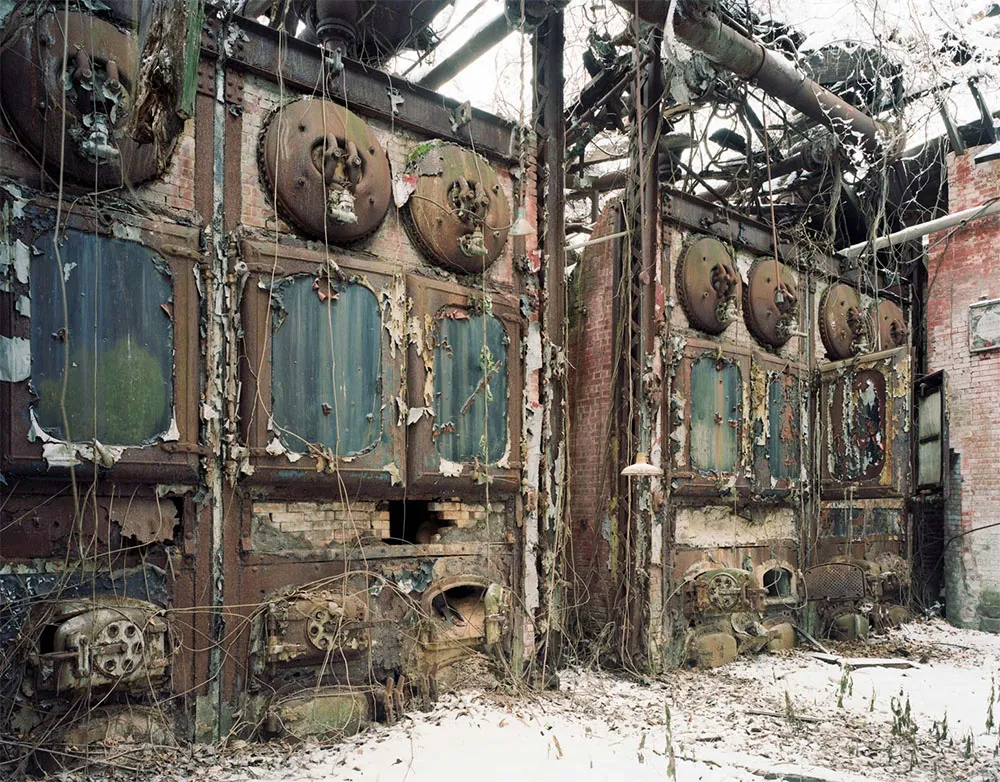
North Brother Island was like its own isolated city. It needed food to be brought it by boat and water brought in through a pipeline; however, it was pretty self-sufficient. The island was able to provide steam, electricity and eventually an internal telephone system and electrical fire alarm system.
The physical plant made all of this a possibility and powered the island with coal which was stored in a building south of the plant. The process was so streamlined that a separate dock was built just so coal could be imported onto the island quickly and conveniently.
The Coal Building
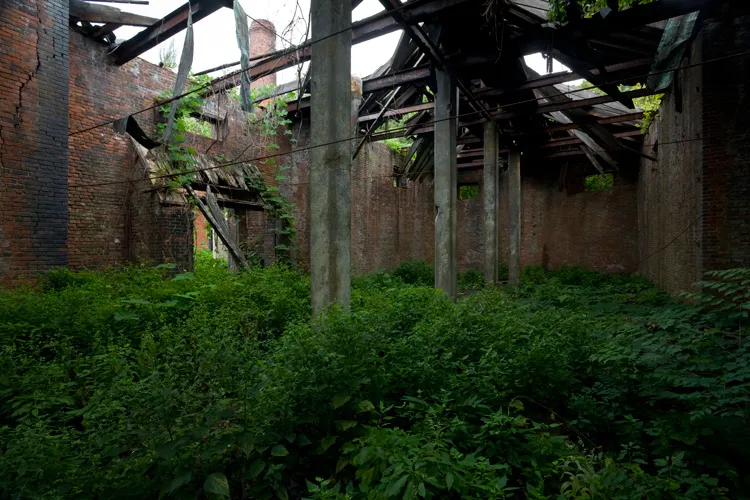
The building that housed coal – the entire island's energy source – was absolutely massive and still, more or less, stands today. This building was located south of the physical plant, which was home to massive two-story boilers that powered the island by burning coal.
Currently, the roof of the coal building has collapsed in, and the floor is covered with an array of ferns and vegetation. It's a really spectacular sight and almost feels like ancient ruins until you realize that they had the most advanced technology at the time. It also wasn't that long ago. The island wasn't fully abandoned until the 1960s.
The City Contemplated a Vast Array of Restoration Ideas of the Past
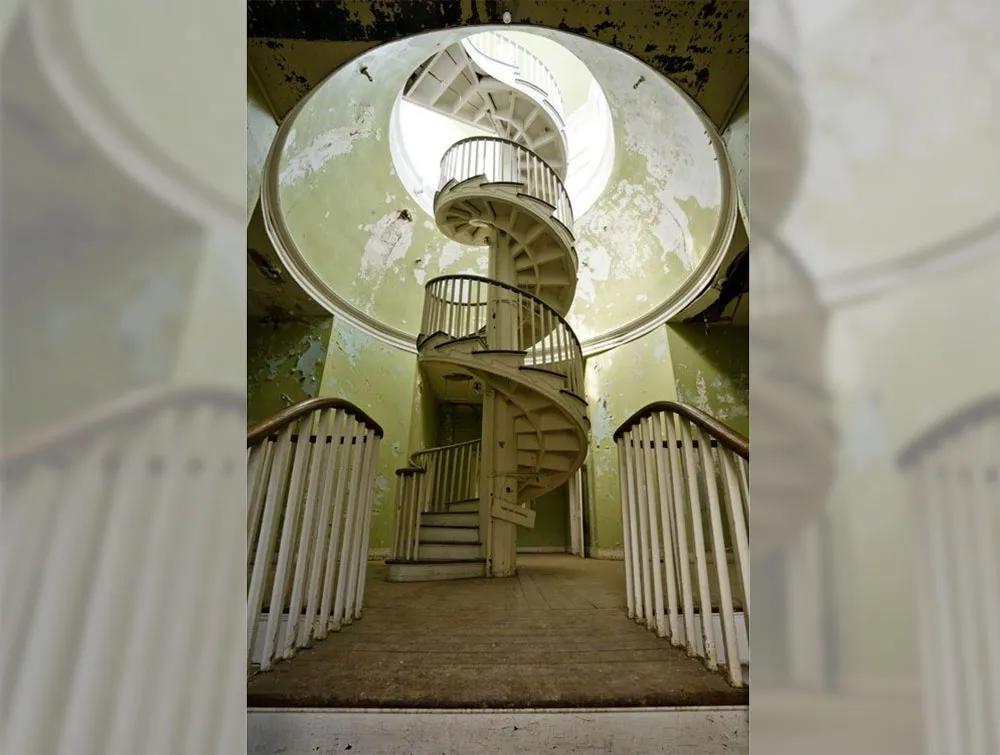
Several ideas were discussed regarding what the island could be used for over the years. The city ended its usage as a drug rehab in 1964, and left it abandoned, yet opened for a number of options. Mayor John Lidsay wanted to sell the island, while Mayor Ed Kotch briefly considered opening a homeless shelter there.
In the 1990s, building a jail was also considered. It would have been an expansion of the nearby Rikers Island, but that was deemed too expensive to build and too expensive to maintain like all of the other ideas.
Current Restoration Plans
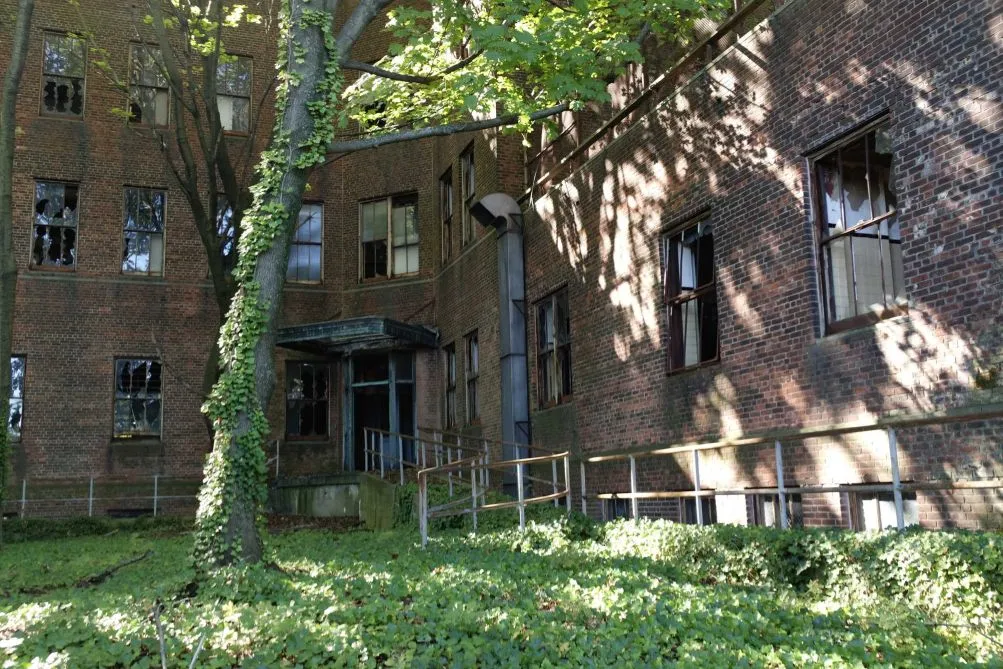
Councilman Mark Levine believes that North Brother Island, with its rich history and a vast array of flora and fauna, shouldn't be so difficult to access. In 2016, he began a campaign to expand access to the island. The idea is currently being studied by Penn Praxis, an affiliate of University of Pennsylvania's School of Design.
The logistics of the restoration have not yet been sorted out as it would be an extremely expensive undertaking. It would require staff to restore, maintain and manage the property – something that may or may not be feasible within the ever tight budget of the city's Parks Department.
Despite the Legalities, It Still Attracts Urban Explorers
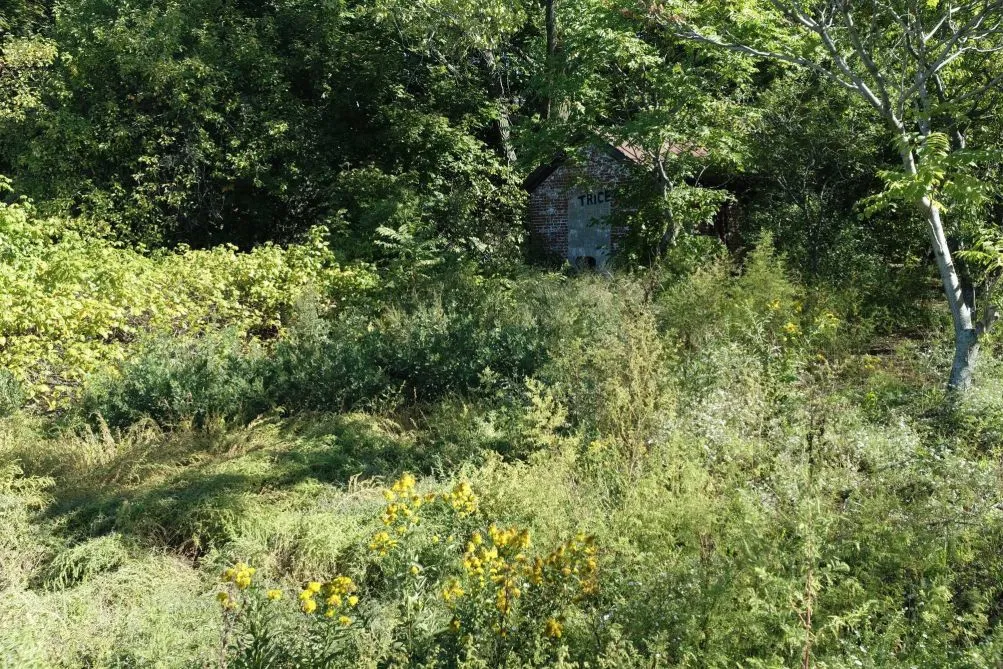
It's obviously illegal to visit North Brother Island, but that doesn't mean urban explorers don't make their way there. While much of the island remains the way it was left when it was abandoned, every so often you will see a modern human influence. This comes as an old chair pulled up to enjoy the view, cans of Heineken beer and other trash or graffiti covering the walls.
Right now, the island is hard to navigate because of poison ivy, which parks officials have been trying to kill. This process is difficult because yanking out the vines can destroy part of the buildings.
A Glimpse Into A World Without People
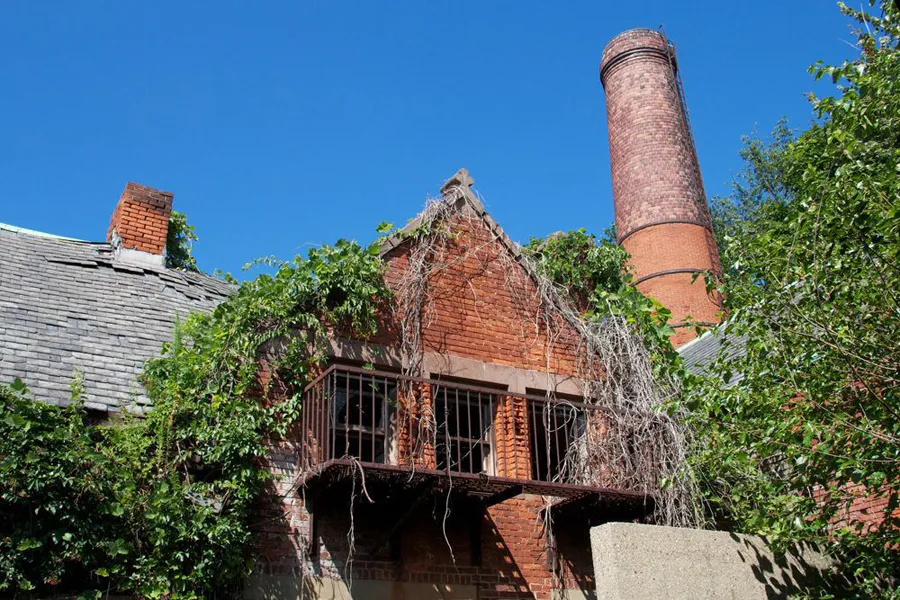
North Brother Island is surely a glimpse into what our world would look like if humans suddenly disappeared. We can see a return of the regions natural fauna, overgrowing and taking back the land.
There has also been a return of various bird species such as the Black-Crown Night herons, as the island now acts as an established sanctuary for them. Since the island is only accessible by boat, there is little to no vandalism, demonstrating the true power of nature, and its ability to completely take back the earth, eventually leaving less and less signs that humans were ever there.
Sounds on the Island

Aside from the buzz and chirps of insects and birds that inhabit the island, it is not uncommon to hear commercial airliners passing overhead coming to and from LaGuardia Airport.
This is one of the few, if not only reminders that there is a bustling city just across the river from this once inhabited island. This is most likely the best view most New Yorkers get of the island until the island is hopefully opened to the public as a tourist attraction as well as a historical location.
How to Get There...
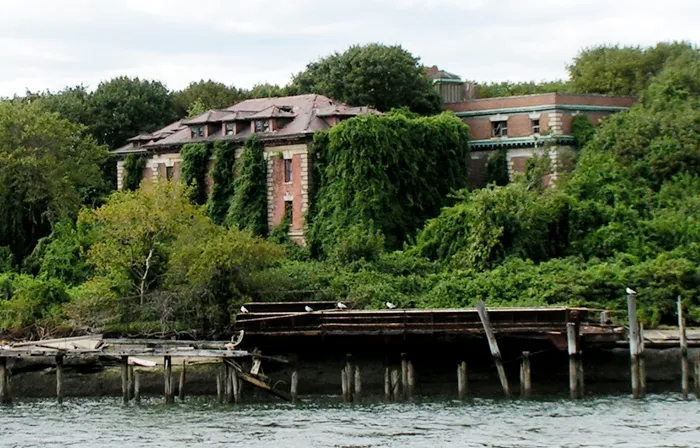
Since it is technically illegal to visit North Brother Island on your own, there are a series of steps that must be taken to be granted permission or taken onto the island with a guide. The first step is to contact the parks department even though they don't go on the island themselves especially during March to October since that is the herons nesting season.
If you are given permission, you then need to charter a boat which can be expensive. Because there is no dock, you then need to take small boats to get onto the shore and essentially beach yourself. This is the most legal way to visit the island, even though the parks department tends to only allow researchers access.
Movie Night Anyone?
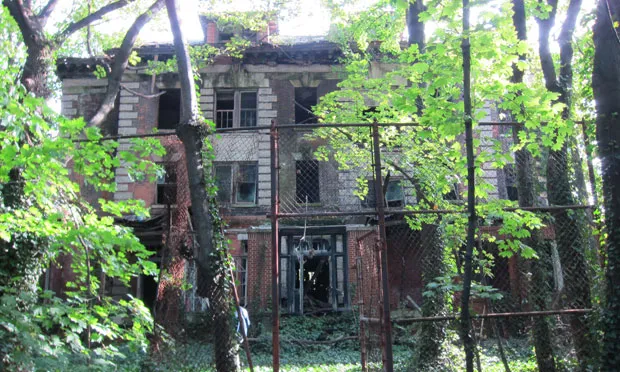
In the entertainment hall, all of the what once were theater seats have collapsed, yet the curtain runner somehow still works if there was still a curtain attached. One can only imagine the theater audience of typhoid and tuberculosis patients or recovering drug addicts all piled in for some ounce of entertainment during their time on the island.
Explorers have also mentioned that the light switches in the hall still go up and down, making that familiar loud switching sound that most of us have only heard in old movies.
Worlds Apart
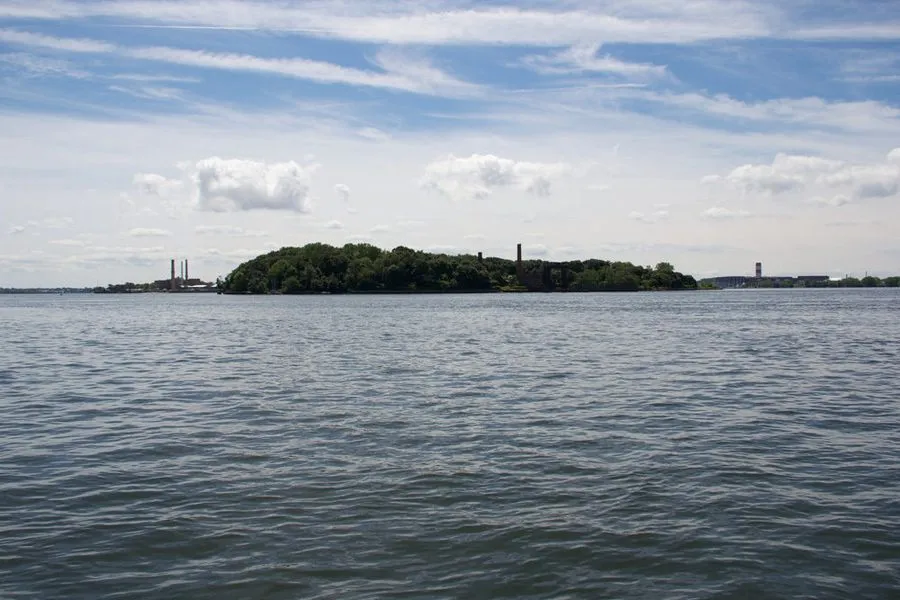
As seen from the Bronx, North Brother Island appears only to be a stones throw away from the rest of New York. It seems strange that the island has been allowed to deteriorate like it has been, considering the prime real estate that many individuals surely wouldn't mind building a property on.
Although it is only a short distance, being on the island and looking out at the city has been described as seeing earth from the moon, demonstrating how secluded the island truly is. This must have driven the "patients" on the island mad being so close, yet so far away from home.
A Home for Veterans
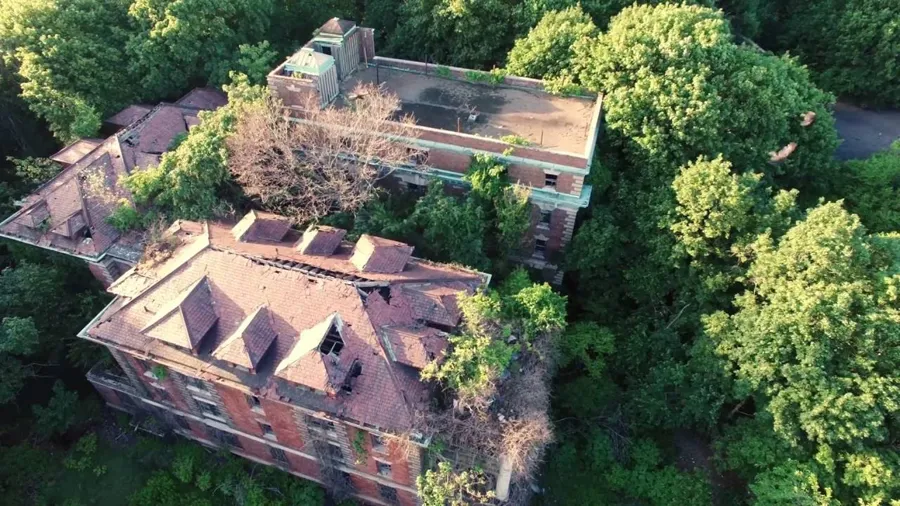
Among the islands many inhabitants from the sick to recovering addicts, after World War II, the island's facilities were used for temporary housing for military veterans and their families while they attended New York colleges. This shows that although the island may have had a questionable past with patients supposedly being held against their will, at one point, it was utilized with good intentions. However, once more housing options began to open up again after the war, the island no longer was a desirable choice for veterans to live, leaving it deserted once again.
The Lighthouse
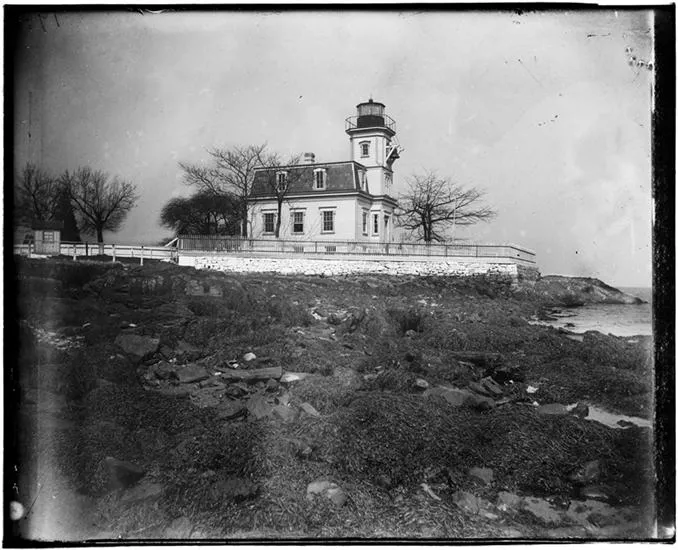
There is little known about North Brother Island before the mid 19th century. It is assumed that the island didn't serve any real purpose until a lighthouse was constructed out of necessity in 1869.
Starting in 1829, the discussion and construction of this lighthouse was a four decade process of negotiations until it was finally built on the island. In 1883, there was a fence built to separate the lighthouse from the Riverside Hospital, disconnecting the patients even further away from any contact with the outside world.
Quarantine Islands Weren't an Unusual Practice
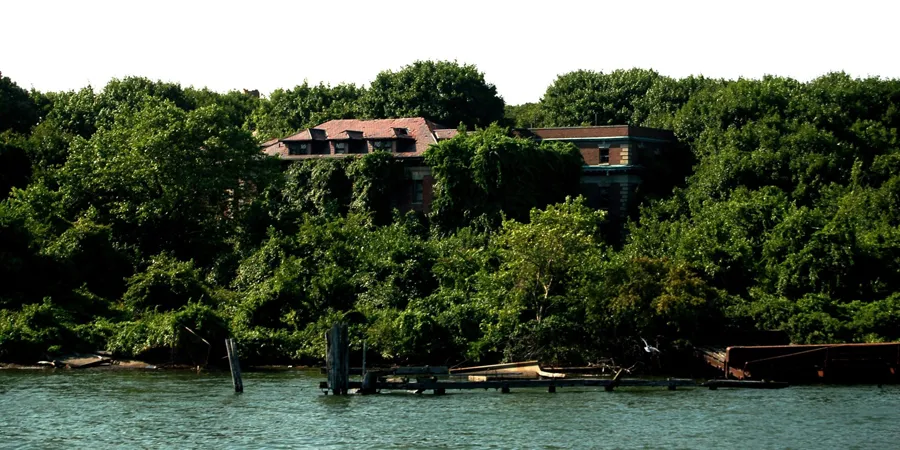
Although North Brother Island is fascinating due to its abandonment and history, using the island as a way to quarantine individuals infected with contagious diseases was not uncommon during the time when the island was operational.
In New York and other American cities, using islands for social welfare purposes, or to separate the sick and the criminals from the rest of society was a common practice. It was an easy way to separate as well as control certain groups from interacting with the rest of society without being totally isolated from the mainland.
South Brother Island
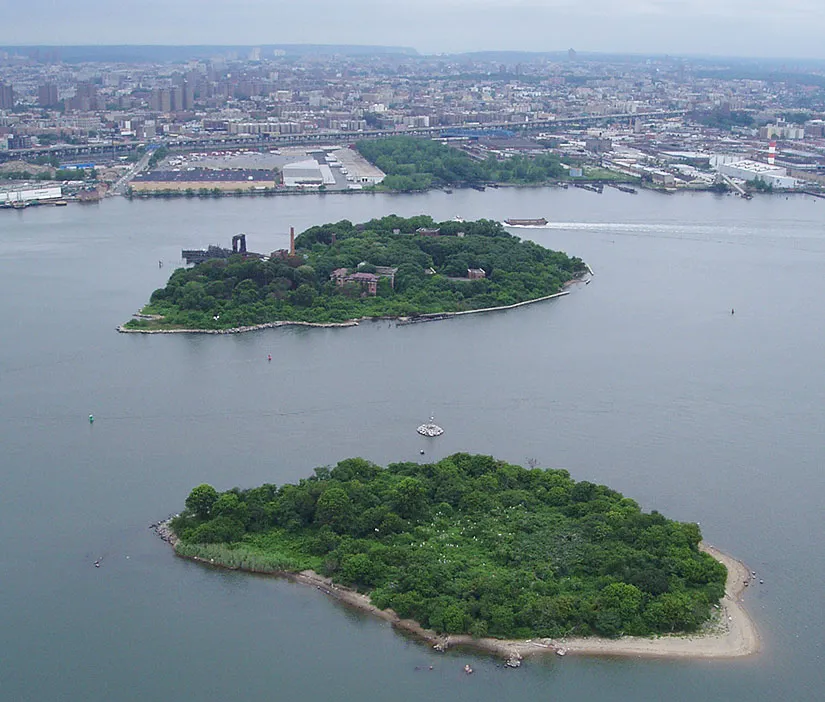
North Brother Island has a smaller sibling named South Brother Island. North Brother is has around 20 acres of land whereas South Brother has only 6. In 1614, both islands were claimed by the Dutch West India Company and were originally called "De Gesellen" which means "the companions" in English. In the mid-19th century, the South Brother Island was used as a city dump for Manhattan, which was eventually stopped because the smell was too unbearable for the nearby neighborhoods.'
In 1975, the South Brother Island was sold to the investment company Hampton Scow Inc. for $10, yet nothing was ever built. In 2007, the island was purchased for $2 million of Federal grant money from the National Oceanic and Atmospheric Administration's Coastal and Estuarine Land Conservation Program and donated to the city's Parks Department as a wildlife sanctuary.
North Brother Makes and Appearance on T.V.
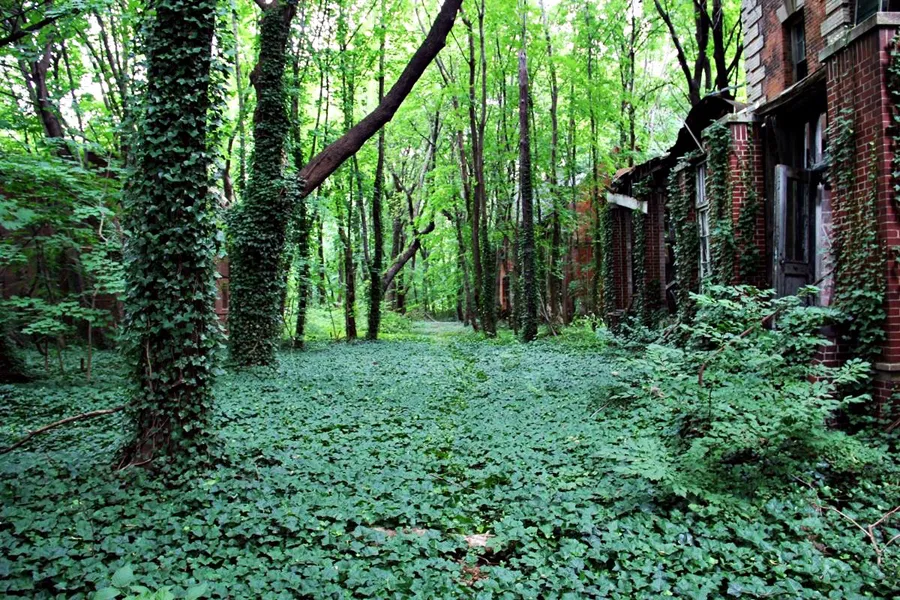
Considering that the island has had very little impact by humans since it was abandoned in the 1960's, the island is a great representation of what would happen to that region of the country if humans vanished.
Because of this, in 2009, the island was featured in the episode "Armed and Defenseless" fro the series Life After People to show what happens to structures 45 years after being abandoned. The island was also featured in the shows Broad City and Unforgettable, showing that the island is still a sought-after location even in popular culture.
Why Nobody Developed North Brother Island After it Closed
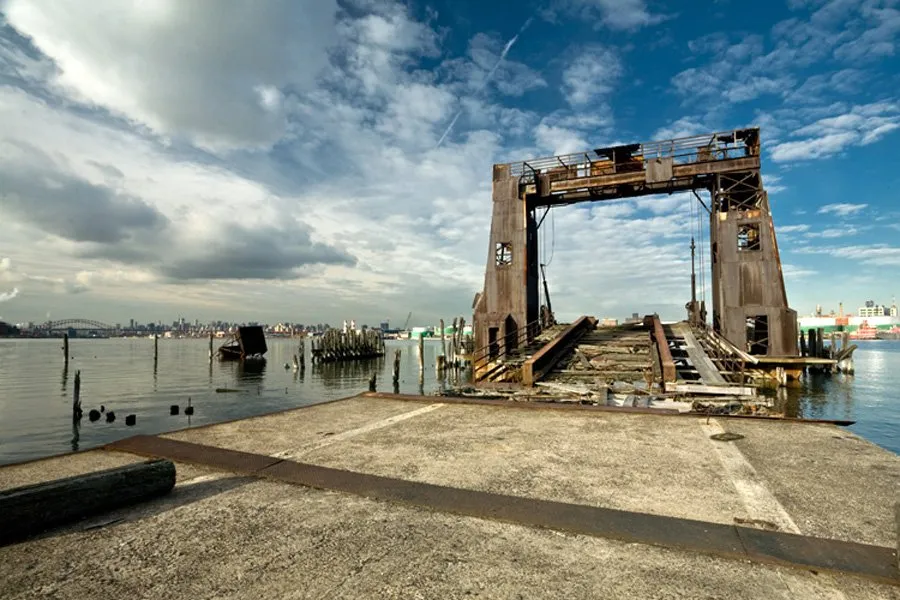
You would think that North Brother Island would be a hot spot for the rich and famous to build a nice summer home on their own private island. However, as it turns out, one of the reasons the island was never developed when it was exchanging hands in the 20th century is due to its proximity to the LaGuardia airport.
It is extremely close to the airport, and the planes coming in and out fly low, and directly over the island. If you wanted to build a quiet summer home, this might not be the best location.
Struggles on the Island

Since North Brother Island is separated from the mainland and the only way to get there was by boat, in harsh weather conditions supplies were sometimes stopped. There were then shortages of food along with other necessities for the patients, making their time on the island that much worse.
Also, in the winter, there was very little insulation in the buildings making for very brutal winter months. Being sent to North Brother was described as a death sentence and those who did return compared it to "The Black Hole of Calcutta".
Surrounding Islands
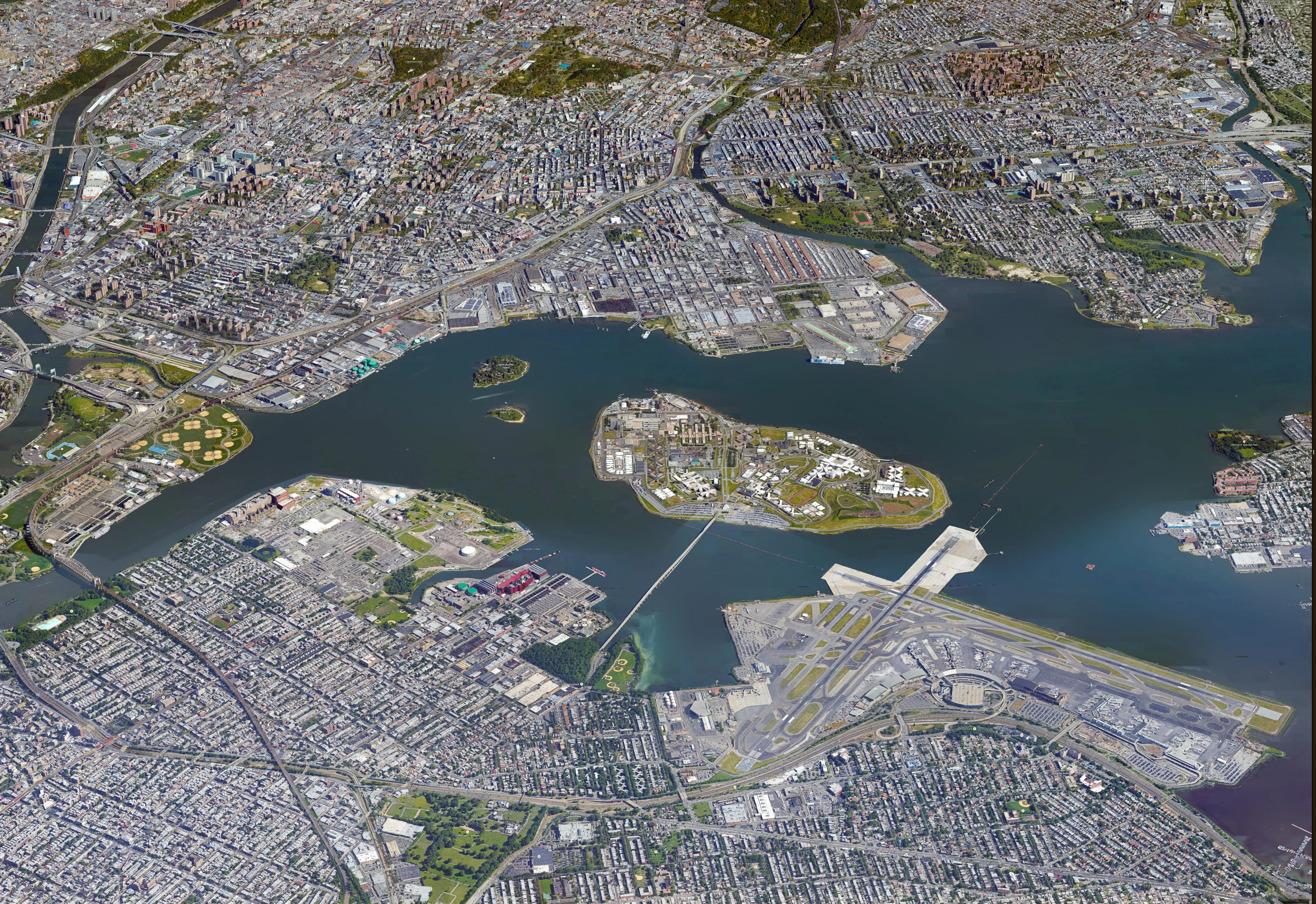
North Brother is only one of over a dozen uninhabited islands under the jurisdiction of the city's parks department. These islands stretch from hog Island in the Bronx all the way down to Isle of Meadows off Staten Island.
Although North Brother is the only island that was once inhabited, they are all similar in the sense that they are popular homes for migrating birds and more specifically herons, egrets, and ibises. Recently, the parks department has been working on introducing native plants on the islands to replace the invasive vines to make for better homes for the birds.
North Brother: A Pleasant Place to Live
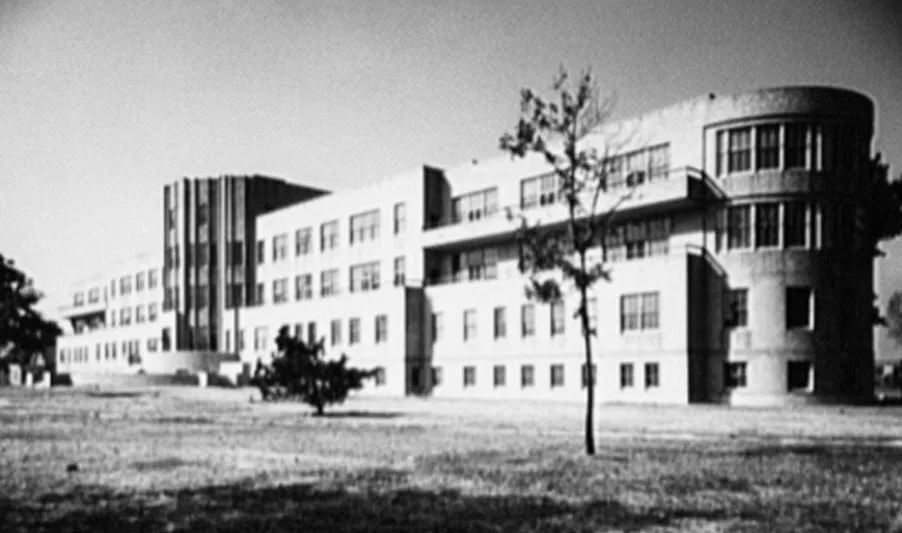
Aside from all of the horror stories described by patients that were quarantined on the island, accounts from veterans as well as patients battling with addiction tell a different story. Photographer Christopher Payne has been photographing and studying the island for years and has met people that had previously lived on the island.
One World War II veteran who lived on the island with his family remembered it being an idyllic place to raise a family. Another man who was sent there for his drug-addiction said that his experience there and the compassionate care he received changed his life and helped him quit for good. Apparently, some people had different experiences than others.
A Look at New York in the 19th Century
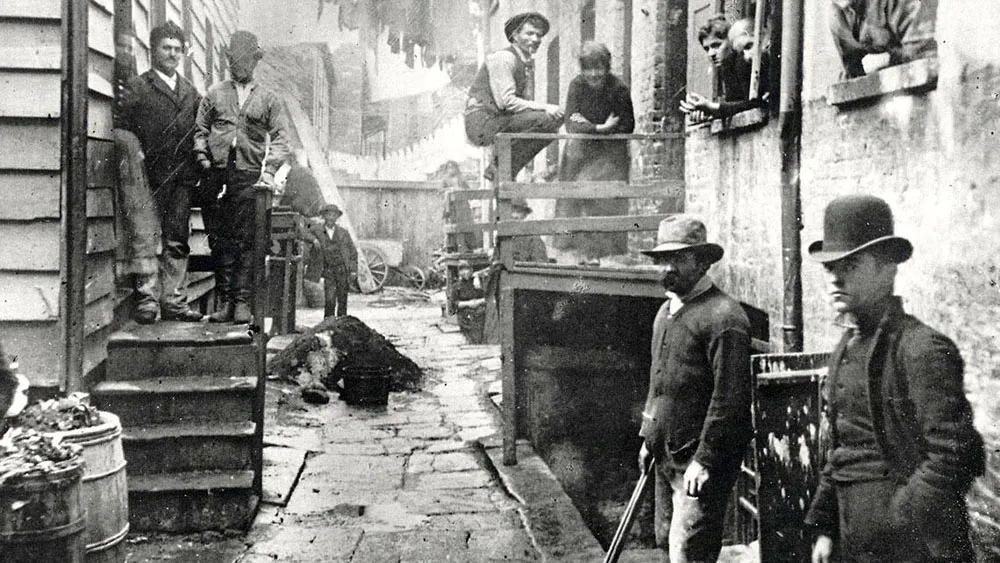
The use of North Brother Island tells a lot about New York geography in the 19th Century. In that time, the poorer groups of individuals and neighborhoods were located on the outskirts of the city such as the waterfronts and islands.
Now, these are incredibly expensive and desired locations which show that the geography and real estate of New York have essentially flipped since the 1800's. What were once neighborhood slums for the poor and undesirables are now some of the most expensive real estate in the country.
Paranormal Activity on North Brother

Considering North Brother's dark past, it is no surprise that there are rumors of ghosts and other paranormal activity occurring on the island. There have been reports of unexplained sounds, malfunctioning electronic equipment and sensations of being touched or pulled by an unseen hand.
There have also been accounts of people that are illegally exploring the island fleeing in terror because something about the island was "off" and it wasn't just the spooky landscape and crumbling buildings. People recall being able to feel the misery and horrors that took place on the island which can even be understood looking at the photographs taken there.
The Doctors' Quarters
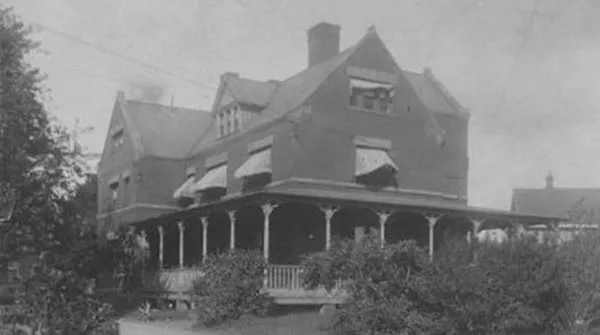
The doctors' quarters on the island were clearly very different from the living arrangements for the sick and dying. The doctors appeared to have lived comfortably in these nice building when the patients were living in cramped and unsanitary tents and shacks built randomly all over the island.
This building is proof of the corruption and mistreatment of the patients that were once quarantined against their will on the island. Although this building has now been taken back by nature, one can imagine the luxury the doctors on the island must have lived in during their time there.
Typhoid Mary Makes Her Debut

Recently, it has been announced that the story of North Brother Island and Typhoid Mary is going to be adapted into a T.V. show with Elisabeth Moss as Typhoid Mary on BBC America.
This television show will surely bring North Brother Island and the history around it to the attention of the general public, where most people have never even heard of the island or its past. Hopefully, this will help to speed up the process of potentially making North Brother more accessible to the public.
Mysterious "Art" Installation
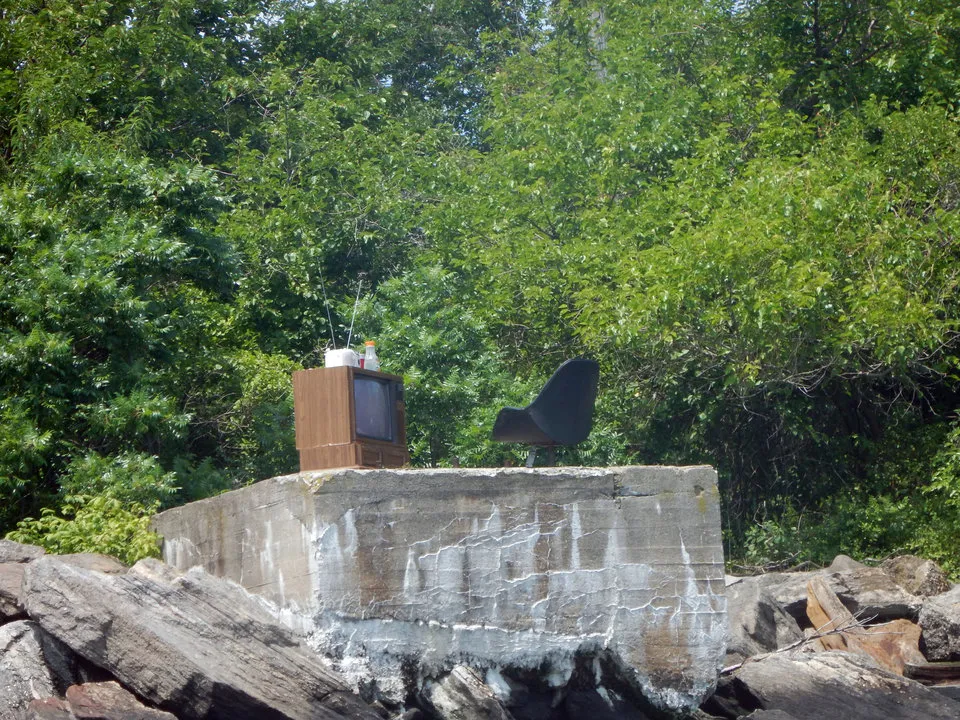
In 2014, a man was kayaking along the coast of North Brother when something caught his eye. On a slab of cement at the edge of the water, there was a full living room set up with a television and a chair.
Since it is illegal, and laborious to even get to the island, it is curious how those objects got there and who put them there. Although it is random, to say the least, it's nice to know that somebody wanted to add a little humor to the eerie island.
Wildlife on the Island
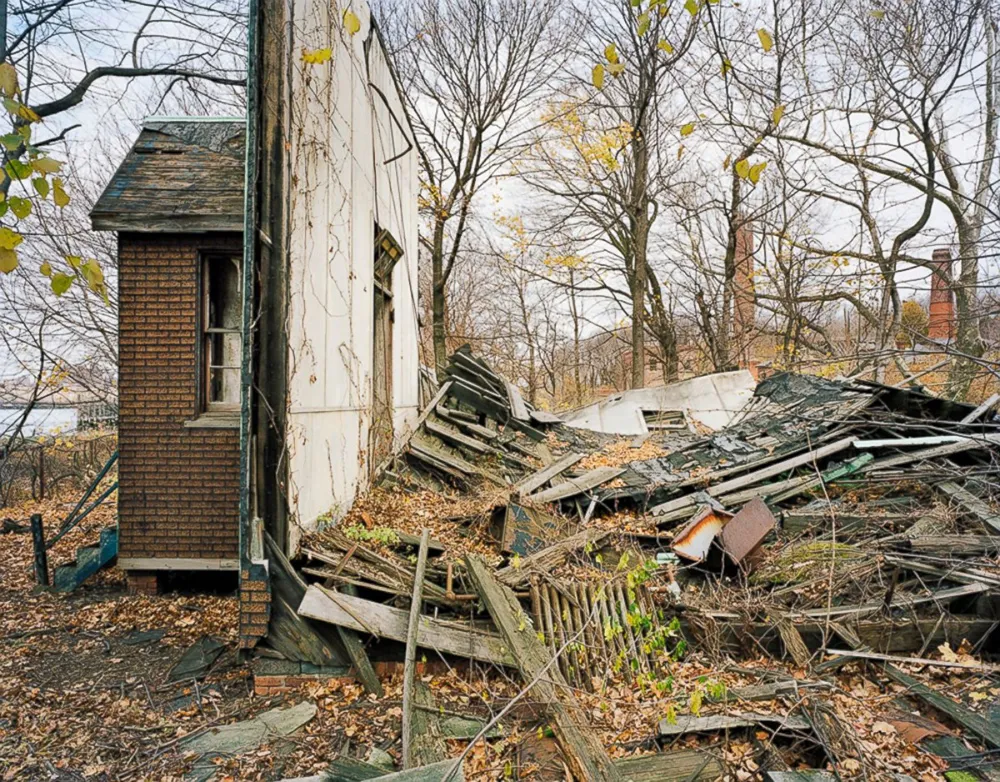
Aside from the great variety of birds who call North Brother Island home, there is other wildlife on the island despite its harsh conditions and isolation from the mainland. John Krawchuk, the Director of Historic Preservation from the Parks Department and notes that there is a range of typical New York wildlife such as rats, raccoons, squirrels, and of course, the birds.
Although it is understandable that these would be the species inhabiting the island, it is also strange considering that these rodents mostly rely on humans for their food, yet they live on an island with no humans around. But surely, the disintegrating buildings provide great shelter and comfortable living for these animals.









